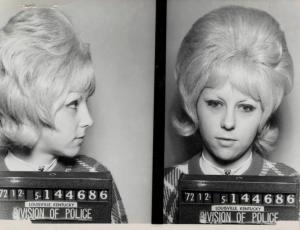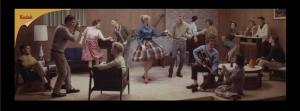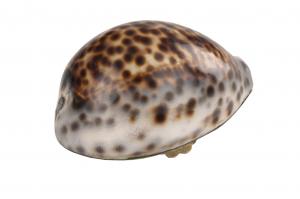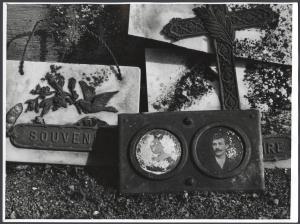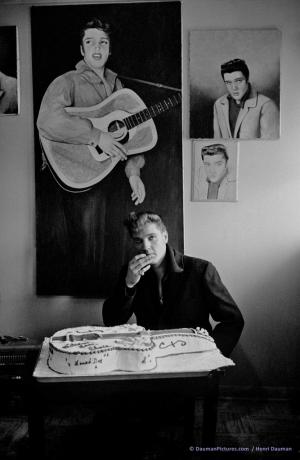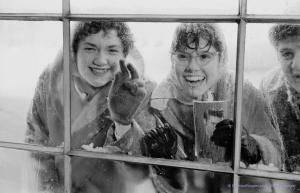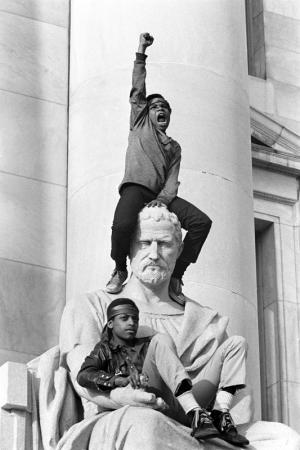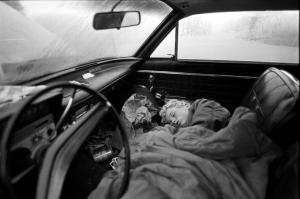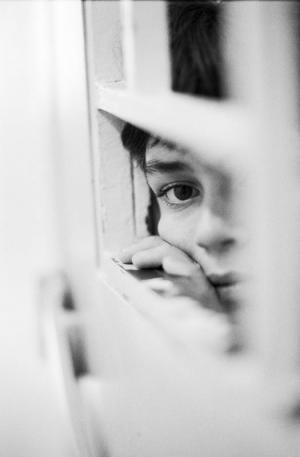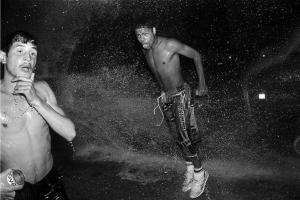Northern Ireland :
Gilles Caron + Stephen Dock
02.12 ... 05.22.2022
Opens Friday 11 February at 7 p.m.
Fifty years after the events of Bloody Sunday, this exhibition blends the historic and the contemporary to broach the Northern Irish question in all its complexity.
The Northern Irish conflict, commonly referred to as “The Troubles”, began in 1968. It tore a corner of Ireland apart, between republican nationalists (Catholic for the most part) and loyalist unionists (Protestant for the most part). It all began with a civil rights movement against the institutional segregation that mainly affected the Catholic minority. The rise of paramilitary organisations on both sides led to the situation escalating rapidly. The Irish Republican Army led a campaign of terrorist attacks mainly between 1969 and 1972. Northern Ireland descended into civil war.
This was a War of Independence for the nationalists and a fight for survival for the Unionists. From the very beginning, Gilles Caron was there to record the many facets of this extremely complex conflict.

Gilles Caron
Northern Ireland - 1969
On August 12 1969, the Derry chapter of the Apprentice Boys, Unionist Protestants and members of the Orange order, held their annual parade close to a working-class Catholic neighbourhood, despite protests from the locals. This led to the Battle of the Bogside, thought by many to be the start of “The Troubles” in Northern Ireland. The British Army rolled in with tanks and tear gas as nationalists fought back with stones and Molotov cocktails. Two days later, while other uprisings were brewing elsewhere in the province, the British Army attempted to take back control. These events marked the beginning of a war that was to last thirty years.
Gilles Caron was in Derry on August 12, covering the Orange march for the Gamma photography agency. He had a feeling the violence was escalating and once he got there, he very quickly understood what was at stake.
It’s quite simple.
I was in
I
reland before anyone else.
The evening before the figh
ti
ng broke out,
I had arrived to cover a march.
Everything was calm, quaint even. The marchers
walked
by
peacefully
in
their
hats
with flowers in their lapels. A fight broke out around four o’ clock in the afternoon.
It started slowly, a few rocks were thrown, and t
hen it got out of hand as the protesters set fire to entire neighbourhoods. It went on like that for three days. We thought it would end as soon as it started.
In Paris
,
they thought
there was no point in
send
ing
someone. The demonstrators took the arrival of the British Army to be
a victory for the Catholics.
I thought it was all over and I was goi
ng to leave when things started up again in
Belfast.
I took a taxi from Derry to Belfast.
I worked all day and all night
then
got on a plane to London a
nd
gave my photos to a passenger who was
flying on
to Paris. That meant that Gamma had the originals the following day
before the slow coaches in the English papers
. The guys from Paris Match arrived on the Saturday
when I was leaving
.
”
[1]
Gilles Caron captured the tension as it built, from the first photos of the marching bands to the first rocks thrown. Very quickly, the police seemed to be overwhelmed and the city became a battleground. Gilles Caron watched as the shift occurred, this was not his first experience of armed conflict as he had covered the Six-Day War, the Vietnam War and Biafra. Through his lens, we see a country at war.
Gilles Caron’s work in Northern Ireland was published by many news magazines around the world and contributed to the conflict getting coverage very early on. In an issue dated August 30 1969, Paris Match
presented its readers with a full portfolio of five double pages of just photographs.
Recently, a book by Pauline Vermare
[2]
entitled Insurrections
provided a complete review of the reportage archives and a written piece of reference. She points out: “These pictures evoke the gaiety of May 1968 and the gravity of the armed conflicts that Caron covered. This tension is what makes this reportage so powerful. By following history in the making, hour by hour, day and night, from Derry to Belfast, Caron is the only person who was there to bear witness to the fundamental turn things were taking for the people of Ireland: state of peace, state of siege, state of war.”
In addition to being “first” on the scene, the modernity of Gilles Caron’s photographic approach makes it exceptional. His work is in constant movement, shot/ reverse shot, from the top of a building, at the corner of a street; in one camp, then in the other. He gets close to the scene, he goes, he comes back, and stops at a strategic spot. At times it feels like he is ahead of what’s happening.
In the middle of the chaos, he pays attention to individuals, main characters or anonymous figures. He takes the portrait of Bernadette Devlin, a leading figure in the civil rights movement in Derry, and that of a young boy with a gas mask that ended up on the cover of Paris Match, icons both. That picture even became the subject of one of the world-famous murals in the Bogside. Other shots, away from the reportage, do not seem destined for a newspaper. Street scenes or portraits away from the conflict, help to build the narrative, to express the tragedy. Through these pictures, Gilles Caron invites the viewer to question themselves and opens the way to new forms of photojournalism.
In his book Gilles Caron, Le conflit intérieur
[3]
, Michel Poivert writes: “Caron’s ambition was to talk about the news in a different way, to integrate his own feelings about humanity to the visual stenography of photojournalism. This attempt to find a new frequency between the outside and the inner life now seems like a foreshadowing of the following decade’s auteur
photography.”
In four days, sixty-two black and white rolls of film and almost three hundred colour shots, Gilles Caron crafted one of his greatest stories; a unique testimony of this turning point in history. Visitors to this exhibition will get to discover his work, beyond the iconic pictures published in the press at the time. It includes seventy photographs, vintage and modern prints, as well as enlarged reproductions of contact sheets that highlight the photographer’s process.
The museum would like to thank the Fondation Caron, the Médiathèque de l’Architecture et du Patrimoine and
Fannie Escoulen for their support in putting this exhibition together
.
[1] See Jean-Pierre Ezan, interview with Gilles Caron, Zoom n°2 March-April 1970
[2] See Gilles Caron, Insurrections, Irlande du Nord 1969 - Text by Pauline Vermare - Editions Photosynthèses, 2019.
[3] See Gilles Caron, Le conflit intérieur, Editions Photosynthèses, 2013


Stephen Dock
Our day will come
Our day will come. The popular Irish Republican slogan evokes the hope for freedom and the wish to vanquish the other side. Words that cannot be said without thinking of the day of our own death.
Stephen Dock started as a photojournalist at a very young age. In 2008, when he was barely twenty years old, his only ambition was to seize the moment. Ever eager to inform, he followed stories to the world’s most dangerous hotspots, Syria, Palestine, Mali, Iraq... War zones became his chosen field, conflict an everyday occurrence. Very soon however Stephen Dock started to ask himself questions. Was he attracted to battlefields because of his own pain, his own inner conflict? His soundless stories expressed his personal battle, the inability to find peace.
Dock decided to take a different path, he started working in a blend of colour and black & white, enlarging certain details, reframing stories. The approach was more personal, the writing more poetic. Photography allowed him to talk about the world and talk about himself. Inside and outside were no longer disconnected. As Gilles Peress puts it “He always photographs from the inside to the outside and not the other way round” freeing up his side step.
The “New IRA” formed in Northern Ireland in 2012. Stephen Dock decided to go to Belfast for the centenary of the Ulster Unionist pact. The tension was palpable, but nothing happened. The time for armed conflict was over. The Good Friday Agreement was signed in 1998, putting an end to thirty years of civil war. But the souls of the people were not at rest, and ancient foes lived together in a fragile peace.
People from both sides of the conflict are, to this day, haunted by an inner violence that is cultural, social and political. It marks the faces of the survivors and those of the younger generations. It wields a power much stronger than physical violence, shaping behaviour, becoming an invariable that is handed down from one generation to the next. If the hate between communities sculpted Northern Irish identity, it has also left a long-lasting mark on the province. Life goes on around the “peace lines”, the “peace walls” that began to appear after August 1969. Dotted around the cities of the province, they separate the inhabitants of the same neighbourhood, at times even the same street. The stigmata of war are everywhere. Huge murals pay tribute to the “heroes” of the conflict, painted messages warning strangers that they are entering republican or unionist territory. The walls speak. Graffiti shows allegiance to dissident groups, voicing support for those in prison, or protesting the occupation: “Brits out!”
Marching season is an annual event, with parades, marches and bonfires of wood palettes that can reach thirty metres high, on which the Irish flag is burned, or the Union Jack. Each event is deeply political and underscores the partition. The division is entrenched affecting daily life down to the tiniest detail.
The question for the photographer was how to render this latent conflict that has opposed two communities for hundreds of years? How was he to represent a society that is this divided? To find an answer, Stephen Dock travelled to Northern Ireland eleven times in six years. He tried to understand the impossibility of peace, something he felt himself. The resulting body of work is made of things and signs from everyday life: portraits, architectural details, street scenes… The photographer chose traces, at times infinitesimal, left by the conflict, and made them visible.
Biography:
Stephen Dock was born in 1988 in Mulhouse. He lives and works in Cambrai.
From very early on he worked in the field, travelling to Venezuela, to Nepal, to the West Bank, to Syria, to Iraq, to Northern Ireland, to the United Kingdom, to Mali, to the Central African Republic, to Lebanon, to Eritrea and to Indian Kashmir. He was represented by VU’ from 2012 to 2015 and was a finalist in the Leica Oskar Barnack award in 2018, finalist in the Prix Découverte Louis Roederer in 2020 special prize-and winner of the Prix LE BAL for young artists from the ADAGP in 2021. His work has been shown at the Leica Gallery during Paris Photo, the Tbilisi Photo Festival, the Visa pour l’image festival, the CNAP, the MAP Festival in Toulouse and at the Bayeux Festival. He has been published in French and international publications such as M le magazine du Monde, Le Figaro Magazine, Newsweek Japan, Paris Match, Internazionale, VSD
and Libération.
The museum would like to thank Canson and Fannie Escoulen for supporting this exhibition
.
The prints were developed and printed in the museum’s laboratory on Canson Infinity Arches 88.
Stephen Dock’s work was produced with support from the CNAP - Centre National des Arts Plastiques.
28, Quai des Messageries
71100 Chalon-sur-Saône
phone / + 33 (0)3 85 48 41 98
e-mail / contact@museeniepce.com
Classic website / Français
Laurence Leblanc
Où subsiste encore (Still remains)
from July 2 to September 25 2022
Opening : Friday, July 1 at 6:30 pm
Photography is generally considered to be able to faithfully reproduce the real. The most common uses of photography as a medium are for its reproductive qualities: illustration, journalism, science, etc. Photography, as an instrument of memory, comparison and knowledge-sharing also records our memories and, in doing so, marks the passage of time; it has been part of our everyday lives since its invention and digital technologies have ramped up its importance to the extent that it is now omnipresent.
These affirmations tend not to apply to the output of photographer Laurence Leblanc. Her work takes us to Africa, Cambodia, Brazil and Cuba where she introduces us to children, nuns, dancers and musicians. However, we do not get to know them or the countries they live in as her motivation, down the years, has not been to record in order to document, but instead to grasp the invisible, to capture that which cannot be recorded in a photograph: the imperceptible thread that links humans, both to one another and through the ages.
Everywhere she goes, she is. Laurence Leblanc absorbs her surroundings, connects with the locals and lives alongside them. She queries, understands, learns. She stays for protracted periods, and often returns to the same places. She shoots instinctively, her work is subjective and benevolent as she seizes the shot delicately, with no premeditation. The photographic act is set off by a feeling, the photographer collects the result.
Back in her studio, time tends to stretch. She takes time, with her photos, her contact sheets, her working prints. Another form of silent, solitary absorption occurs. Before she shares them, the photographic images that will feature a lived experience must stand out, they must provoke questions, enquiries and doubts.
Laurence Leblanc speaks of capturing the inner energy and emotion that we all share. It is quite the challenge as it involves depicting that which is intangible. But she does. Leblanc brings her uncompromising auteur’s gaze to bear through this prism alone. The photographs she chooses to show are emotional echoes of the ties that bind people, things and the world.
This exhibition voluntarily blends different series, from Rithy, Chéa, Kim Sour et les autres
(2003) to the hitherto unseen Du soin
(2021) as for Laurence Leblanc, it makes no sense to identify groups, establish a chronology or outline a theme; her work is an ever-renewed attempt to keep that which is invisible but still subsists, alive and perceptible, despite everything: the tenuous, fragile but essential ties that bind.
Curator:
Sylvain Besson, musée Nicéphore Niépce
The museum would like to thank La Société des Amis du Musée Nicéphore Niépce and Canson.
The prints in this exhibition were produced in the laboratory of the Musée Nicéphore Niépce on Canson® Infinity Baryta Photographic II 310 g/m² paper and Canson® Infinity Rag Photographic 210 g/m² paper.

28, Quai des Messageries
71100 Chalon-sur-Saône
phone / + 33 (0)3 85 48 41 98
e-mail / contact@museeniepce.com
Classic website / Français
Penser / Classer : 50 ans du musée,
hommage à Georges Perec
from July 2 to september 25 2022
Opening :July 1 at 6:30
To celebrate its 50th anniversary, the Musée Nicéphore Niépce (1972) will lift the veil on what the public never sees: the storage rooms, the wealth of its collections. It is impossible to show everything, and even making a representative selection is difficult. An upcoming catalogue will retrace the history and the museum’s acquisition policy. Consequently, in order to give a feeling of the diversity and size of the collection and avoid doubling up with the permanent one, this approach is more poetic. The idea is to invite the public in to have fun with the spaces, inspired by Georges Perec.
Perec (1936-1982), known as the “mad taxonomist” was an adept of classification, lists and inventories. In an essay entitled Penser / classer
(Think/ Classify
), he ironically questions this anthropological obsession with trying to impose order on the world. Humans feel the need to sort through the world in order to understand it, to think it through. A place for everything and everything in its place. This overriding “obsession” is at the heart of museum life and activity. Regardless of its field of expertise, a museum acquires, sorts, classifies, preserves, transmits and shows.
This has been the mission of the Musée Nicéphore Niépce for fifty years, focussed on one subject, photography.
Images within images.
From the very beginning, photography carried a fixed idea, a utopia, at its heart, born out of the revolutions of the 19th century. The belief that through photography, we can show everything, and bring the entire world into a museum. The belief that we can make a universal and exact statement about things, and preserve a living image. The belief that we can win out over the passing of time, forgetting and destruction. Furthermore, the belief that we can better know and understand the world, by detailing, unpicking, examining it from every angle, from the infinitely huge to the infinitely tiny.
Photography kept its side of the bargain as is evident from the storage rooms of the musée Nicéphore Niépce. For two centuries, photography has, without a doubt, fulfilled all of our individual or collective taxonomic obsessions, whether they are scientific or documentary, amateur or artistic. The nature of the museum’s collections and the way they are organised can sometimes bring on a form of Perec-ian dizziness. Perec’s lists can also be applied to photography: “arrange, catalogue, classify, cut up, divide, enumerate, gather, grade, group, list, number, order, organise, sort”
. Then “subdivide, distribute, discriminate, characterise, mark, define, distinguish, oppose, etc”.
However, contrary to what they entail, none of these operations can be said to be objective. There is no such thing as neutrality and exhaustiveness. Everything comes with a certain perspective, decisions made in advance, off camera.
Thankfully, as Perec reminds us with humour and humility, our quest for omniscience is doomed to failure. By the time we finish them, our attempts to organise knowledge are often obsolete, and perhaps “barely as effective as the initial anarchy” …
Curator: Emilie Bernard, musée Nicéphore Niépce
The museum would like to thank Sylvia Richardson, Bernard Plossu, the Société des Amis du Musée Nicéphore Niépce and our partners, the Maison Veuve Ambal and Canson.

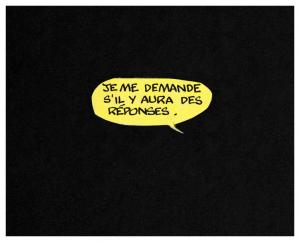
![Henri Schliemann Atlas des antiquités troyennes. Illustrations photographiques faisant suite au rapport sur les fouilles de Troie [218 planches] Paris Maisonneuve et Cie 1874 tirages sur papier albuminé © Coll. musée Nicéphore Niépce Henri Schliemann Atlas des antiquités troyennes. Illustrations photographiques faisant suite au rapport sur les fouilles de Troie [218 planches] Paris Maisonneuve et Cie 1874 tirages sur papier albuminé © Coll. musée Nicéphore Niépce](/var/ezflow_site/storage/images/exposition/actuelles/50-ans-du-musee/antiquites/58464-4-fre-FR/antiquites_smartphone.jpg)
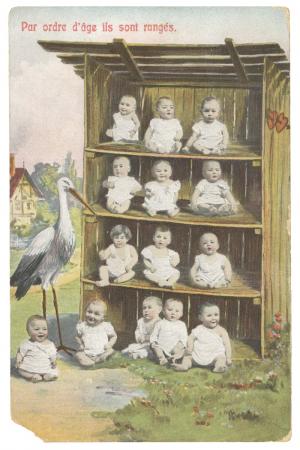
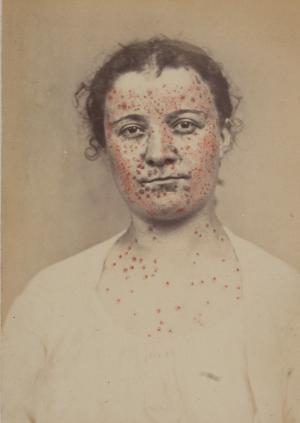

28, Quai des Messageries
71100 Chalon-sur-Saône
phone / + 33 (0)3 85 48 41 98
e-mail / contact@museeniepce.com
Classic website / Français
Think / Classify : 50 years of the museum,
part 2
10.22.2022 to 01.22.2023
The second part of the Think / Classify exhibition invites the public to continue discovering the museum's collections with a renewed display of works.
To celebrate its 50th anniversary, the Musée Nicéphore Niépce (1972) will lift the veil on what the public never sees: the storage rooms, the wealth of its collections. It is impossible to show everything, and even making a representative selection is difficult. An upcoming catalogue will retrace the history and the museum’s acquisition policy. Consequently, in order to give a feeling of the diversity and size of the collection and avoid doubling up with the permanent one, this approach is more poetic. The idea is to invite the public in to have fun with the spaces, inspired by Georges Perec.
Perec (1936-1982), known as the “mad taxonomist” was an adept of classification, lists and inventories. In an essay entitled Penser / classer
(Think/ Classify
), he ironically questions this anthropological obsession with trying to impose order on the world. Humans feel the need to sort through the world in order to understand it, to think it through. A place for everything and everything in its place. This overriding “obsession” is at the heart of museum life and activity. Regardless of its field of expertise, a museum acquires, sorts, classifies, preserves, transmits and shows.
This has been the mission of the Musée Nicéphore Niépce for fifty years, focussed on one subject, photography.
Images within images.
From the very beginning, photography carried a fixed idea, a utopia, at its heart, born out of the revolutions of the 19th century. The belief that through photography, we can show everything, and bring the entire world into a museum. The belief that we can make a universal and exact statement about things, and preserve a living image. The belief that we can win out over the passing of time, forgetting and destruction. Furthermore, the belief that we can better know and understand the world, by detailing, unpicking, examining it from every angle, from the infinitely huge to the infinitely tiny.
Photography kept its side of the bargain as is evident from the storage rooms of the musée Nicéphore Niépce. For two centuries, photography has, without a doubt, fulfilled all of our individual or collective taxonomic obsessions, whether they are scientific or documentary, amateur or artistic. The nature of the museum’s collections and the way they are organised can sometimes bring on a form of Perec-ian dizziness. Perec’s lists can also be applied to photography: “arrange, catalogue, classify, cut up, divide, enumerate, gather, grade, group, list, number, order, organise, sort”
. Then “subdivide, distribute, discriminate, characterise, mark, define, distinguish, oppose, etc”.
However, contrary to what they entail, none of these operations can be said to be objective. There is no such thing as neutrality and exhaustiveness. Everything comes with a certain perspective, decisions made in advance, off camera.
Thankfully, as Perec reminds us with humour and humility, our quest for omniscience is doomed to failure. By the time we finish them, our attempts to organise knowledge are often obsolete, and perhaps “barely as effective as the initial anarchy” …
Curator: Emilie Bernard, musée Nicéphore Niépce
The museum would like to thank Sylvia Richardson, Bernard Plossu, the Société des Amis du Musée Nicéphore Niépce and our partners, the Maison Veuve Ambal and Canson.

Entre sciences et poésie, le « photographe-physicien » Patrick Bailly-Maître-Grand (1945) travaille sur la matière, l’espace, le temps, le mouvement, avec les principes originels de la photographie. Ici, il s’agit de mesurer et révéler le trajet d’une fourmi sur du papier millimétré. « La construction de ces images est complexe (enregistrement du parcours, sélection des différentes attitudes, collages, tirage via des papiers huilés, etc) mais cette jonglerie technique n’a guère d’importance pour moi. Avant tout, c’est un hommage à ces voyageuses qui, pendant nos siestes sous un arbre, dépassent largement les frontières de notre transat. » (Patrick Bailly-Maître Grand)
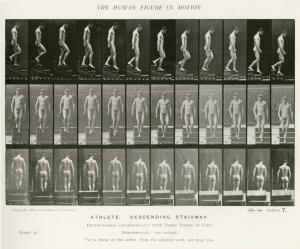
Le britannique Eadweard Muybridge (183O-19O4) inspiré par les travaux d’Étienne-Jules Marey(chronophotographie), invente en 1878 un dispositif photographique de décomposition des mouvements, composé d’une douzaine d’appareils à déclenchements successifs. Ces nouvelles représentations font l’objet de deux livres, Animal locomotion, et The human figure in motion. Muybridge, comme Marey, font figure de précurseurs du cinéma.

Membre de l’administration coloniale en Afrique équatoriale française, les photographies de Jean François Audema (1864-1921), représentant les populations et les activités coloniales, sont éditées et diffusées en cartes postales avec la mention « Collection J. Audema ». En 1897, alors qu’il est en poste à Luango (Congo), il photographie le passage de la mission Belge Behagle-Bonnet de Mézières et celui de la mission Marchand. Le musée Nicéphore Niépce conserve un ensemble de 71 plaques de verre de cet auteur et de cette période.
Par l’exercice du photomontage (découpage, collage) pratiqué dans ses archives personnelles, Christian Milovanoff (1948) associe des images, qu’il en soit l’auteur ou non, et les fait résonner entre elles. Cette mise en ordre du chaos visible crée du sens, des récits, entre documentaires et fictions
28, Quai des Messageries
71100 Chalon-sur-Saône
phone / + 33 (0)3 85 48 41 98
e-mail / contact@museeniepce.com
Classic website / Français
Madeleine de Sinéty
A village
10.22.2022 to 01.22.2023
Inauguration Friday October 21, 7p.m.
Following on from the shows at the Gwinzegal Art Centre in Guingamp and the Musée de Bretagne in Rennes, the Musée Nicéphore Niépce presents “Madeleine de Sinéty, A Village”.
The show features 120 photographs that trace ten years of the photographer’s life and work, with an additional forty shots that were not part of previous iterations.
Madeleine de Sinéty’s work comes with a journal that is both factual and personal, and covers a wealth of iconographical categories that includes family photographs, portraits, reportage and ethnographical studies.
When photography was invented, people suddenly became visible as they were. According to the light they reflected, their imprint could now appear on a light-sensitive surface. This major anthropological event opened the way for the documentation and study of absolutely everything: monuments, landscapes, but also peoples. Ethnography took full advantage of this, but photography is, above all, a form of representation. People make themselves available and photography merely interprets; we can only presuppose the objectivity of the document, nothing more. This potential for truth in a photograph therefore requires a historical, social and cultural framework, in addition to inside knowledge of the mental structures that presided over their creation.
[1]
Madeleine de Sinéty’s work involves understanding how individuals relate to one another, tracking the traditions that tie them together and uncovering personal and collective stories. Regardless of their status, it is undeniable that these photographs tell us much about an era and a community. They provide an attentive account of a social reality: a rough life, still without electricity or running water, in some cases, and with few mechanical tools. A vision of the precariousness of an agricultural world that was on the way out. Contrary to the ethnologist who must always keep “one foot in and one foot out”, Madeleine de Sinéty did not keep her distance. On the contrary, she shared the lives of her subjects. She was fiercely attached to people, and her long-term commitment to her subjects was decidedly unscientific.
A close look at the photographs and an in-depth study of her writings tells us that her project is truly something else. It appears to be based on an inner need, detached from any form of functionality in terms of the pictures. Madeleine de Sinéty is looking for an “elsewhere”, an intimate elsewhere that signifies a break and a significant life change. Her background is aristocratic, and as a small child, she resented never being allowed to venture onto the farm attached to the family chateau: “I came to Poilley (…) completely by accident. I was living in Paris and knew nothing whatsoever about the countryside, even though I had spent most of my childhood summers in Valmer, my great-grandmother’s Renaissance chateau in the Loire valley. From my third-floor, attic-bedroom window, over the French-style gardens and the high stable walls, I could see a corner of the farmyard. I would spend hours watching the cows enter and leave the stables, listening to them moo, watching the farm children jump in the hay and the long-haired horses slowly pull the high-sided wooden trailers with big, iron-clad wheels. I could hear the shouts and the laughter, the wheels clattering on the farmyard cobbles, the high-pitched whistle of the thresher. I could smell all of the farm’s smells, the freshly-cut hay, the warm cow-pats, the fermenting milk, but I was not allowed to go. The farm was off limits to the children of the château.”
Years later, she got the urge to discover this elsewhere that seemed so close. She wanted to move to the country, discover another life, and to do so she would have to integrate, to truly take part in the everyday life of the community, over a long period.
“(…) I decided to stop for the night in the most remote village I could find. The following morning, I awoke to the sounds, shouts and smells of the farm of my childhood. I always travel with my bicycle in my car, so I took it out and went for a spin around the surrounding countryside. For the first time ever, there was no one to prevent me from entering the farm. I went back to Paris to resign from my job as an illustrator and set about organising my new life in Poilley.”
Things were not easy in the beginning. She took to wearing wooden clogs and was seen as eccentric. It was even said in the village that she was a spy! She had her moments of doubt, but her interest in life as it was lived in Poilley was genuine. She really got involved, working hard, making no concessions. She shared the everyday lives of a number of families as they worked the soil, planting, harvesting, calving, making hay, slaughtering pigs… taking part in farm life in every season. The locals got used to her presence and to her camera.
Her close relationships with her subjects can be seen in her photographs. She allows the villagers to come into the frame naturally, until they eventually become consenting players in the project. They end up trusting her to “see their own story”: “I began photographing Poilley in colour and every now and then I would invite the village to a slide show. We had to carry extra benches from the church to the dirt-floored village hall in order to seat everyone so that they could admire their own lives and work. Amid the shouts and laughter, they were surprised to find they were so beautiful.”
Madeleine de Sinéty photographed stories, big and small, and catalogued them all in her journal. Every evening she would write down everything she had heard during the more or less formal interviews, and would plan what she wished to photograph the following day. She gave equal importance to the banal and the extraordinary. She set down unforgettable quarrels between families, accounts of how to grow beetroot, a calculation of how many potatoes bought a pair of clogs, and unfailingly recorded the precision and indifference of movements that are repeated thousands of times to the rhythm of nature: a woman tossing hay, a man striding through a field, children playing in piles of apples… She experienced this world. She did not just build a visual representation, she added smells, noises, feelings… Looking at the pictures today, the emotion can still be felt. Through photography, today’s viewers can access a real sensory and emotional experience.
In the late sixties, French rural communities had been shoved into modern times and were having a hard time coping with this sea change, in particular the consolidation of land holdings. They were bewildered, stuck between peasant farmers and farm “operators”. Madeleine de Sinéty was only too aware of this development. She knew she was not recording the future of agriculture, as mechanisation and monoculture were soon to become the rule.
Over time, her photographs, in typical seventies slide colours, have taken on a new resonance. They bear witness to customs and a way of life that have disappeared, to a life of immense freedom and natural generosity, to a pace of living where speed was not an issue, to a time past where farm animals were known by their names, “Coquette”, “Bijou”… The before-times, that are of particular relevance to us today.
“The work is hard, but this house is so peaceful, I want to live here, rocked to sleep by the slow ticking of the clock in the hall. The work is hard, but regular. Day after day, we calmly dig, labour, prune and water to be rewarded with wheat and summer fruit.
Then it starts all over again, quietly, without haste, anxiety or fear, and each year feels like the one before, as if we could live forever.”
Madeleine de Sinéty.
The book :
Madeleine de Sinéty, Un village
Editions GwinZegal
23x21 cm
188 pages
ISBN : 979-10-94060-28-5
[1] André Rouillé « Le document ethnographique en question »

28, Quai des Messageries
71100 Chalon-sur-Saône
phone / + 33 (0)3 85 48 41 98
e-mail / contact@museeniepce.com
Classic website / Français
Yannick Cormier
Tierra Magica
02.12 ... 05.22.2022
opening : friday february 11th / 7pm
It feels like a fever dream. Like a strange nightmare. In the early-morning mist, the trees seem to take on human form, the bushes grow legs and walk forward with a determined gait, human tissue becomes bark, or the other way round. Elsewhere, horned beings, covered in animal skins, feathers, even blood, wearing grimacing masks, forming a cohort that we join with fear, fascination or even enthusiasm. Sometimes, these creatures from a distant-past hurl abuse at passers-by, pretend to kidnap young women, or fight one another. At times they allow themselves to be hunted, to be mistreated by the crowd then judged by a court, whose verdict is unsurprising: at daybreak, they disappear in the bonfire.
Yannick Cormier immerses himself in the carnival rites of Portugal and North Western Spain in a manner that is truly his own. He brings no pre-established protocol, no aesthetic pretention or need to make an inventory to the table. Other photographers have already done that. 19th
century anthropologists systematically captured the faces and profiles, making an inventory of the masks, accessories and costumes, reducing ancestral rites to the status of folklore. More recently, meticulous and spectacular photographic directories, laid out with technical exactitude and method, brought these figures back to the present in an almost anachronical way.
These pictures, however, are intended to go beyond all that, to the border between the visible and the invisible, between fear and hope, between pagan beliefs and religious beliefs. Unruly, turbulent and transgressive, these photos are imprinted with the pulsation of the crowd, revealing the vital forces at the very origins of carnival. Yannick Cormier takes the viewer on a journey to the heart of the tumult and strangeness of these festivals, all of which share the common thread of marking out time, transgressing established order and reminding society of its intangible connection to nature. The seasons follow one another, life is perpetually reborn. Death, as tragic as it may be, is very much part of life. Cormier blends these parades with archetypal landscapes, like so many fantastical visions, depicting forests that could be the belly, the forge, but also the place where these unsettling creatures fade into the mist.
These festivals were banned by Franco in 1937 as they encouraged unrest and rebellion, and were never officially rehabilitated. Instead, they became events of political and cultural resistance. They are still around today and circumstance has made them synonymous with a new form of disobedience. For those who wish to be at one with others, to frolic in a packed crowd in a life-saving burst of freedom.
Biography
Yannick Cormier was born in France in 1975. In 1999, he joined Astre studio in Paris. He started off working as an assistant to Patrick Swirc, William Klein and many others for magazines like Vogue, Flair, Elle, Vanity Fair. He then became a news photographer and had his work feature in French and foreign publications like Libération, Le Nouvel Observateur, Courrier International, The Guardian, The Hindu, CNN...
Cormier lived in India from 2003 to 2018, where he continued his photographic explorations while developing other activities. In 2007, he founded Trikaya Photos Agency, based in Chennai (Tamil Nadu), a collaborative platform for photographers working in India, who were interested in the political, social and cultural issues facing a society that was constantly changing before their eyes. Between 2011 and 2016, Yannick Cormier also curated a number of exhibitions for the Chennai Photo Biennale and Pondy Photo (Pondicherry).
During this period, he began to document the rites, celebrations and festivals of the Dravidian people in Southern India (from the Sanskrit “Dravida”, which means surrounded by water on three sides). “In Tamil Nadu, in the south of India, the most far-back, ancient traditions have remained intact. The powerful presence of spirits and living Gods are incarnated behind the masks, in the release of the bodies during the rite and in the animal bodies during the sacrifices. We can no longer tell if they are men, Gods or spirits, as they live their real and divine, natural and supernatural truth. Men and women in a trance rushing into the darkness, in broad daylight…” His immersive process creates pictures that suggest more than describe, leaving space for the artist’s own feelings of fascination, astonishment and exaltation. These pictures were published in 2021 under the title Dravidian Catharsis
, by Le Mulet.
Yannick Cormier’s interest in jubilant crowds, ancient traditions and lasting archaic rituals found a new outlet when he moved back to Europe. His experiences of carnivals in Portugal and North-West Spain rekindled his attraction for forms of resistance to the uniformization of the modern world. Somewhere between the sacred and the profane, mysticism and paganism, not unlike the subject, Cormier explores these festivals, oscillating between fiction and reality, in Tierra Magica
published in 2021 by Light Motiv. His research into the borders between the real and the spiritual is ongoing, under the title Pagan Poem
.

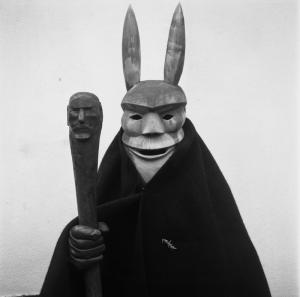
28, Quai des Messageries
71100 Chalon-sur-Saône
phone / + 33 (0)3 85 48 41 98
e-mail / contact@museeniepce.com
Classic website / Français
Alexis Cordesse
Présences
oct. 15 th 2021 ... jan 16th 2022
opening : thursday oct.
7 pm

Alexis Cordess / anglais
The prints of series Itsembatsemba
and Juliette
for the exhibition were produced in the laboratory at the Musée Nicéphore Niépce on Canson Infinity Rag Platine 310 g. and the series La Bruja
on Canson Infinity Baryta Prestige 340g paper.
The museum would like to thank: Canson, La maison Veuve Ambal and La société des Amis du musée Nicéphore Niépce.
Publishing:
Alexis Cordesse,
Talashi
Atelier EXB,
Éditions Xavier Barral
Bilingual French-English,
16,5 x 23,5 cm
128 pages
55 photographs in color
35 euros
Isbn : 978-2-36511-318-2
In library,
Oct. 7th 2021.
Presences
Today’s networks and the flood of data have led to the trivialisation of press photography. Digital technology has turned each and every one of us into potential witnesses and producers of pictures. This instantaneously uploaded content creates the illusion of a hyper-visible world orchestrated by huge media networks that dictate a regime of urgency and immediacy. There are so many pictures out there that we zap more than we look. The sheer volume of content means each quickly glanced at/ quickly forgotten picture is given the same weight. When timeframes are so short and the present is all that matters, there is little room for analysis or long reportage work that requires time, thought and long-term involvement. Alexis Cordesse was born in 1971 and started working as assistant to Gianni Giansanti in 1990, before going to work as an intern at the Sygma photo agency. The following year, he took his first photographs in Iraq, at the end of the first Gulf War, a war “without pictures” that was to push news coverage into the age of suspicion. His influences came from photojournalism but he soon found himself straining against the confines of press photography. Formats and layouts dictated editorial decisions and magazines tended to consider photographers as mere illustrators. Print media was already suffering from the onslaught of television news since the early seventies, and in the early nineties, the recession hit hard. The arrival of the Internet only exacerbated the problem.
Cordesse changed his approach radically during a reporting assignment in Kabul in 1995. He took the shots he was expected to take, but, at the same time recorded sounds, changed viewpoints, and started to make films using his photographs. His approach has been evolving ever since. He revisits various genres (portraits, panoramic shots, landscapes), examining the responsibility of the photographic image and its imaginary potential. He reinvents lengths and distances, goes off-centre, imposes his own demands and choices, and puts words to his pictures. For him photography has become one tool he uses among so many others to bear witness to the complexity of the world. In the process, he has forged his own testimonial ethos. This exhibition proposes a retrospective of Alexis Cordesse’s work in the form of ten collections, some of which have never been shown in public.
Kabul, A Weary War
1995
In the war-torn Afghan capital, plagued by rival militias, Alexis Cordesse recorded sounds and took photographs, mixing action shots with more contemplative work. This marked the first time he stepped away from pure reportage to produce a series of short films.
Itsembatsemba
1996
L’Aveu
2004
Absences
2013
Over a period spanning eighteen years, Alexis Cordesse produced three series on the genocide of the Tutsi people in Rwanda. He was aware that photography was limited when it came to bearing witness to a tragedy so complex and so extreme that any attempt to record or represent it was impossible. Instead, he took the shortcomings of the medium into account and added archive material and numerous interviews to his photographic approach. In Itsembatsemba
, Alexis Cordesse photographed what happened after the genocide, bodies being exhumed, commemorations for the dead and survivors in psychiatric hospitals. The combination of his photographs with extracts from Radio-Télévision libre des Mille Collines (RTLM), the propaganda channel used by those perpetrating the genocide to spread hatred, adds another layer of meaning. The words and voices contaminate and complexify the visual representations of the horrors to remind us that any extermination, before becoming an act, is an idea, a word, born from a human mind.
In L’Aveu
, Cordesse photographed the perpetrators of the genocide according to a strict protocol: dark backdrop, neutral lighting, frontal shot in colour. The portraits come with extracts from interviews he conducted with the subjects. For Cordesse, genocide is an inhuman crime, committed by humans. He considers the perpetrators of the genocide to be “in our likeness” to use Georges Bataille’s expression; his portraits attempt to reveal the ambivalence and complexity of these people without making any moral judgements. He avoids all dramatic effects, working at the same height as the subjects, varying his framing and continually asking himself questions, asking us questions: from what distance do we look at these men and women?
The final part of the trilogy is a series made nineteen years after the fact. Playing with the old colonial cliché that referred to Rwanda as “a paradise with a thousand hills”, the Rwandan landscapes in Absences
are devoid of any human presence, instead revealing a luxuriant view of nature that invites contemplation. No trace remains of the events, except for a complete list of the victims on a memorial wall, a commemoration scene shot from afar and the voice of three women, two survivors and one “just”. Faceless witnesses, who tell us what happened to them in this apparently tranquil place.
Borderlines
2009-2011
Borderlines
, sees Cordesse revisiting a photography classic – the panoramic shot – using contemporary digital techniques. He examines the question of borders in the Holy Land, a place that is saturated with media stereotypes where there is always something happening. His project is two-fold, to bear witness to the fragmentation of a territory where separation is the watchword, and to use photographs in composite form to create depictions that blur the lines between description and fiction.
Talashi
2018-2020
Talashi
is a “appropriated” piece that has never been shown in public before, made up of the personal photographs of Syrian exiles that Cordesse met in Europe and in Turkey, and who agreed to hand them over to him. The piece blends the intimately personal and the historical. The everyday images chosen by Cordesse are all familiar to us. Removed from the current affairs and news stories that surround them, they allow us to imagine and empathise with the lives of these ordinary people, that have been turned upside down by extraordinary events.
Olympus
2015-2016
A Greek friend once told him “You should climb Mount Olympus”. Cordesse was in Greece for a job on the political landscape in a region that the weather suddenly made inaccessible. Instead, he climbed up the legendary domain of the Gods, that he never even knew existed geographically until that very moment. Climbing the mount takes physical effort and awakens the senses. The physical, not mystical ascension, puts the climber into a particular mental state. He undertook the climb six times, and each time had the same feeling of connecting with the world.Cordesse later associated the exceptional images that came
out of this unexpected experience with snapshots of his everyday life. Olympus
is a meditative, pensive piece, a complex ensemble with no documentary logic that creates a secret echo. In addition to his work outside of press photography, Alexis Cordesse is also a portrait taker of note. The exhibition will present two iconic series that show his approach to the portrait, giving visitors an opportunity to discover work that has never been seen. In these three ensembles, the timeframes are long, the work happens year after year, and the repetition creates a form of trust and complicity with its subjects.
La Bruja
1999-2001
Cordesse retired to Cuba after ten years of working in conflict zones. When living in Havana, during a trip up the island’s east coast, he discovered the village of La Bruja. Located at the foot of the Sierra Maestra, it is a particularly remote place and it can take days to get there sometimes. He stayed with Lela, who lived in the only solid house in the village. To thank her, he took her portrait with a Polaroid. The first shot led to others. The village inhabitants came, one by one, dressed in their most beautiful clothing. Alexis Cordesse went back to the village regularly over three years and became the village’s official photographer.
La Piscine
2003
Summer 2003, the aquatic centre in Châtillon-Malakoff in the southern suburbs of Paris, became an

28, Quai des Messageries
71100 Chalon-sur-Saône
phone / + 33 (0)3 85 48 41 98
e-mail / contact@museeniepce.com
Classic website / Français

Curated by
Anne-Marie Filaire
and Sylvain Besson,
musée Nicéphore Niépce
All of the prints for the exhibition were produced in the laboratory at the Musée Nicéphore Niépce on Canson Infinity Baryta Prestige 340g paper.
The museum would like to thank: Canson and La société des Amis du musée Nicéphore Niépce.
Anne-Marie Filaire is not a war reporter who files dispatches from the world’s hotspots. She observes the effects of war, the changes it leads to, the wounds that remain. These are disasters that have cooled off, that cannot be fixed, they must be absorbed and only time can make them fade, but not disappear. Her recent work in Paris and its surrounding regions, happily not exactly at war, most probably needs to be approached from that angle.
Jean-Paul Robert,
D’Architectures, Nov. 2020
Anne-Marie Filaire was 25 years old when she became printer Yvon Le Marlec’s assistant in Paris, a job she held from 1987 to 1991. After getting her technician’s diploma from the Crear laboratory, she immediately went into art printing. Print photography was booming and Le Marlec was one of a select group of well-known printers that every big-name photographer wanted to work with: Dirk Braeckman, Bernard Plossu, Bettina Rheims, Patrick Zachmann… Just like Philippe Salaün or Claudine Sudre, Le Marlec knew how to get the best out of their negatives.
In 1989, Le Marlec had big plans. It had been ten years since he left his job as printer at the Musée Nicéphore Niépce and set up shop in the Rue de Charonne. His ambition was to contribute to the history of photography by inventing a new process. In tandem with the chemist Christophe Bart, they developed a process to develop photographs using daylight. In order to publicise their invention, Le Marlec organised a spectacular show set to music specially composed for the occasion for the closing night of the Rencontres d’Arles. In an old theatre, lit by projectors, he revealed a latent photographic fresco, a giant photomontage (27 panels that measured 1.10 x 1.10m) of extracts from photographic masterworks and portraits of photographers, from Lewis Carroll to Helmut Newton, Bruno Barbey to Edward Weston… The evening was a triumph for Le Marlec who appeared on stage dressed all in white, catching the light, like a guru.
Anne-Marie Filaire worked to assist Yvon Le Marlec during the months-long preparation and manufacturing of the photomontage. She immortalised each instant, revealing the daily goings on of a photographic laboratory, showing every detail until the big reveal on July 8th 1989… Photography was grateful.
The dark room
I arrived in Paris in 1987, and moved into a small top-floor apartment, at 81 rue de Maubeuge in the 10th.
In those days, being a photographer was not really a job. One started out assisting other photographers, in fashion or advertising [I was an intern on a shoot for an ad by Gerhard Vormwald with the famous slogan ‘Ma chemise pour une bière
’ (My shirt for a beer)], for magazines, or as a laboratory technician. There were a lot of labs in Paris, and print photography was big so I chose to go into printing. But I didn’t want to do any old thing, I didn’t want to work in a big lab, I wanted to do art prints.
A well-known printer, Yvon Le Marlec, had just set up shop and was considered to be the best photographic printer in Paris. I had heard about him as I was finishing my photography course.
I was ambitious and determined so I just went to see him with my landscapes of the Auvergne that I had taken and printed myself. I told him I wanted to work with him and he hired me on the spot. So that’s how I started working straight away in Paris, just after I qualified as a lab technician at the Crear. I started working immediately at 5 rue de Charonne with Yvon. To begin with, I did the baths and retouching, until the lab got another enlarger and I started printing. I stayed there until February 1991.
The first photos I ever touched were by Pierre de Fenoyl. At the time, Yvon was working on “Chronophotographies
”, a book published for the Musée de l’Élysée in Lausanne and Charles-Henri Favrod.
Pierre de Fenoyl had just died and I discovered what an impact his death had in the photography world. That was my first physical encounter with a piece. Touching the material, handwashing soaking prints for hours, feeling the paper as it dried, pressing it, letting it stretch, retouching the photos with a brush.
The work I did for those four years was difficult and painstaking. Working in a lab is not easy,
but I was feeding myself intellectually. I met all of the big-name photographers of the day Denis Roche, Bernard Plossu, Antoine Legrand, Bettina Rheims, Xavier Lambours, Paolo Nozolino, Patrick Zachmann, Gladys, Marc Le Méné, Marie-Paule Nègre, Pascal Dolémieux, Agnès Bonnot, Thierry Girard, Ève Morcrette, Claude Dityvon, Jean-Michel Réverdot, Gérard Rondeau, Alain Turpault, Hervé Rabot, Pierre- Olivier Deschamp, Gilles Favier, Claude Bricage, Paul Facchetti… The portraits of Edouard Baldus, the work of Jacques-Henri Lartigue whose I make the preparatory prints for upcoming exhibitions and publications, François Hers and the DATAR Mission photographs. But also those of the magazine Actuel, Claudine Maugendre, Jean-Luc Monterosso, Dominique Gaessler, Pierre Devin, and Claude Gassian, who was on the fringe of the art world at the time. I chose to work with him and I printed the work for the first albums he did for Jean-Jacques Goldman, Renaud, and then for Rock images. The Niépce prize-winners also came from the lab on the rue de Charonne. We also produced the work of foreign photographers who worked all over the world and the developer revealed images by Gabriele Basilico, Sebastiao Salgado, Josef Koudelka, Jeanloup Sieff, Helmut Newton,Robert Mapplethorpe, Marc Trivier…
When André Kertész’archive arrived in Paris in 1987, I was lucky, or privileged enough to look at each of his contact sheets, one by one, to discover part of his work and life. It was, and still is, one of the most moving experiences of photography I have ever had. I have Isabelle Jammes to thank for it, who was working with Pierre Borhan at the time on the publication of Kertész’ “Ma France
”, a book and exhibition for which Yvon Le Marlec produced the prints for the Mission du patrimoine photographique.
I learned everything I know about light and photographic material during those four years. Yvon taught me one really important thing, to know when to stop. I think that is the biggest lesson from my early working life. A photographic print is made from living matter and we are always trying to get the best print possible. We play with chemicals, we look for nuances, depth, light. It can go on forever, and I learned that over the years. At the start I would arrive early, I would prepare the developer according to whatever prints Yvon had to do during the day, varying levels of contrast, according to the paper. I became an expert in dosing hydroquinone, phenidone, sulphite… and I would leave late, having washed, spun and dried all of the prints during the day, to run off to pick my son up from school.
The first exhibition I printed was Lartigue’s “Les femmes
aux cigarette
s”, from glass platenegatives, where one of the faces that appeared was Josephine Baker’s. An entire pantheon opened out in front of me in the dark. My intellect and imagination were nourished by world events and the big changes of the time such as the demonstrations and repression at Tiananmen Square in Beijing. I discovered people from the world of art, literature, the world that I knew from what I was reading, came to life in the floating pictures I handled every day.
At lunchtime, I would go to dance classes at the Café de la Gare. Between two washes, I would go to see films at the Bastille cinema, I remember seeing the Rossellini season from beginning to end. The lab was located at the back of a large courtyard that housed artisans and upholsterers, near Bastille on the corner of the Faubourg Saint-Antoine. I used to sometimes visit the offices of the Cahiers du Cinéma
that were on the Faubourg. At that time, when I was printing other peoples’ work, I was also taking photos, every day with an autofocus L35 Nikon. This exhibition at the Musée Nicéphore Niépce reconstitutes this photographic journal from the busy period when we were working on the fresco for the Rencontres Internationales de la photographie in 1989.
Since 2011, I have been teaching photography at Sciences Po, and I lecture on this period of the history of photography, that I took part in, and that I am still writing today. Photographers from the eighties, were very much part of a tradition, Arago’s announcement of the existence of photography was only 150 years old, we were inspired by the Americans, it was a time of big exhibitions, and when photographybecame part of contemporary art.
Anne-Marie Filaire,
Paris, June 2021
Biography
For over twenty years, Anne-Marie Filaire has been exploring landscapes on regular trips to faraway places, mainly to the Middle-East and Asia. The notion of time is important to her work. Her time frame is frozen, the space of trauma, the blindness of conflict, or even repetition, that she depicts in an extremely constructed and structured fashion She photographs zones where conflict has happened, is happening or is about to happen. Motivated by intimate sparks, far from her family and her home, Anne-Marie Filaire looks for “beauty in light and violence” 1, questioning notions of borders and enclosure, inside territories where history and men have left their trace. While humans are practically absent in her photographs, the stigmata of their passage are omnipresent and the unease is, at times, palpable.
Anne-Marie Filaire’s landscapes are brave and poetic. She never gives in to simplicity, her own stance and subjectivity are key as she explores dangerous regions where it can be risky to be a photographer. By regularly going back to the same places, Anne-Marie Filaire composes an archaeology of these territories. Her process is identical, whether she is photographing landscapes in Auvergne for ten years for the Mission de l’Observatoire Photographique du Paysage or the installation of a wall between Israel and the Palestinian territories: repeated viewpoints, a fascination for the horizon, very structured framing. Her still, silent landscapes bear witness to the passage of time. The true subject of her work turns out to be time itself: photographic layer after photographic layer, the accumulation documents, objectivates but above all, creates a body of work.
Anne-Marie Filaire was born in 1961 in Chamalières (63), and was photograph printer Yvon Le Marlec’s assistant in Paris from 1987 to 1991. Her first, seminal series was created between 1994 and 1996, dedicated to volcanic landscapes in the Puy-de-Dôme and the Cantal (that led to her first personal exhibition at the Musée d’Art et d’Archéologie in Aurillac) set her up as a landscape photographer. In 1999, she began travelling through the Middle- East and Asia, while in France she worked with the Mission de l’Observatoire Photographique National du Paysage. Her work then shifted toward the notion of environments that she depicted through series on doors and bedrooms. She now teaches photography at the Paris Institut d’Études Politiques. Her work has been shown in many exhibitions in France and abroad. The Mucem, in Marseille, held a solo exhibition in 2017 the highlight of which was Zone de sécurité temporaire
(Textuel / Mucem, 2017).
Anne-Marie Filaire continued her exploration through the excavations of the Grand Paris. A number of exhibitions planned for 2022 will showcase this work. In 2020, she published Terres,
sols profonds du Grand Paris
with Éditions Dominique Carré / La Découverte, en 2020.



28, Quai des Messageries
71100 Chalon-sur-Saône
phone / + 33 (0)3 85 48 41 98
e-mail / contact@museeniepce.com
Classic website / Français
AZIMUT
A photographic journey
with the Tendance Floue collective
10.24.2020 ... 01.24.2021
Opening Friday Oct. 23 th 7 pm
AZIMUT
[from the Arab (as-)simt, the path
],
March – Octobre 2017
A photographic journey.
In France.
French photography has a new found sense of freedom. The Tendance Floue photographer’s collective grew tired of the constraints of commissioned work, and were eager to get back the feeling of independence that defined the movement’s origins, so they decided to go on a road-trip. The idea was to travel around in a relay, exploring the countryside, wandering aimlessly through the cities and towns. Their only requirement was to move forward a little every day and to document their impressions of the road in words and images, before passing the baton on to another photographer. The idea was not to take a break, but to open a window on the world.
At the time, the Tendance Floue collective was about 25 years old, a quarter of a century in other words. That crucial age where freedom meets maturity. Everything is possible at that age. It is the time we break free to travel the world, when we define and appropriate a place, alone or with friends.
The members of the collective invited other photographers to share their road-trip experience. With the new-found freedom of Azimut, the collective came into its own. One echoed the other.
The unprecedented six-month relay-journey involved fifteen members of the collective and sixteen guest photographers. Travelling without a specific aim is what defines any adventure. While the path taken was incidental and the destination unimportant, documenting the Azimut was the one rule everyone had to follow. A Moleskine notebook was handed from traveller to traveller like a relay baton, forming a common thread between the photographers. Travelling meant knowing when to stop, to be able to write, comment, express their fears, share their encounters and, at times, log their dreams. The story of the journey is told in both photographs and words. Social media kept a daily track of their activities as each day, a photograph was posted to an Instagram account with comments from the photographer. The project was also recorded in self-published notebooks, almost in real time, anchoring it very much in its time.
The French landscape has already been extensively documented photographically, from the Mission héliographique that began in 1851, to DATAR in 1984 to France Territoire Liquide in 2017. Tendance Floue reinvented the genre and took it outside the box, without waiting for the next institutional campaign. Everyone was free to choose their own path, literally and figuratively; they were even free to get lost, all the better to trace an instinctive cartography of the landscapes they travelled through. Azimut gives us an unfettered look of a territory in the concrete sense of the term, while also exploring the personal territories of the artists. It forms a collective trail that makes room for each individual to express themselves.
With:
Bertrand Meunier,
Grégoire Eloy,
Gilles Coulon,
Meyer,
Antoine Bruy,
Pascal Aimar,
Alain Willaume,
Patrick Tourneboeuf,
Mat Jacob,
Kourtney Roy,
Pascal Dolémieux,
Michel Bousquet,
Julien Magre,
Stéphane Lavoué,
Léa Habourdin,
Fred Stucin,
Marine Lanier,
Clémentine Schneidermann,
Mouna Saboni,
Guillaume Chauvin,
Yann Merlin,
Gabrielle Duplantier,
Olivier Culmann,
Bertrand Desprez,
Julien Mignot,
Thierry Ardouin,
Yohanne Lamoulère,
Marion Poussier,
Denis Bourges,
Flore-Aël Surun,
Laure Flammarion
and Nour Sabbagh
Curated by:
Anne-Céline Borey, Sylvain Besson, musée Nicéphore Niépce
All of the prints in the exhibition were printed in the Musée Nicéphore Niépce’s laboratory on Canson paper Imaging, Photo Mat Paper 180 g and Infinity, Rag Photographique 310 g.
The museum would like to thank:
Canson, The Société des Amis du musée Nicéphore Niépce, all the members of the Tendance Floue collective and their guests, in particular Clémentine Semeria, Grégoire Eloy, Bertrand Meunier and Fred Boucher.
Edition:
Azimut
Éditions Textuel
ISBN : 978-2-84597-821-8
17 x 23 cm
288 pages
35 €

Bertrand Meunier
I went down to the banks of the Seine to observe the retirees and their dogs. I thought about the soap opera “The Young and the restless”, and about my mother who I haven’t seen since the summer, about the little things in life, in mine, in yours, in the world. It was nice. Everything was calm. The barges were quiet.
Grégoire Eloy
I read as I walked along an endless straight line. A straight road can undermine any long-distance athlete. You just have to look ahead where the road meets the horizon and your legs will suddenly give way and you will be taken over by the immediate urgeto abandon the race.
Antoine Bruy
I take a photo of the couple alongside their bearskin. It’s awful. I go to bed with aching legs.
Meyer
I arrive in Vézelay, liquid and dissipated like the rain, a ghostly pilgrim. I give in to the urge to wander around the village for the last time. The journey is over. I’m ready to meet Antoine, it is his turn to take to the road now. I think about my friends Tendance Floue, about the others, about all those who have a taste for the urgent and the futile.
She says nothing.
I say nothing. We share the inexpressible.
She leaves.
In a few bewildering hours, I am in Paris.
Alain Willaume
The sun is fading. I set up camp beside a small lake and lie down for a long time, loosening my back, relaxing my shoulders, pushing back against the pain. I start to hear the fish murmuring, far, far away. As dusk settles, I can barely make out the hound of the Baskervilles through the tent opening [...] I am here, I recognise and I understand, I share what I am told. And everything is new again.
Mat Jacob
STRIKE! INSURRECTION!
— Communiqué zéro
31.05.2017 – 10:44
THE OUPAS STRUGGLE BEGAN ON THE PLATEAU DE MILLEVACHES, HOTSPOT OF RADICAL THINKING AND RESISTANCE OF ALL TYPES. FROM OUR REFUGE, OVERLOOKING A CLANDESTINE HILL WITH AN AMAZING VIEW, WE HEREBY ADDRESS THE AZIMUT COMMUNITY THROUGH COMMUNIQUÉS IN ORDER TO CALL FOR A STRIKE AND FOR INSURRECTION. WE, JOSÉ CHIDLOVSKY AND MAT JACOB, HEREBY DECLARE THE IMMEDIATE CESSATION OF THE AZIMUT JOURNEY. WE ARE IMMOBILE, WE HAVE STOPPED WALKING ALL THE BETTER TO TRAVEL. OR NOT. THE OUPAS STAND FOR ABSOLUTE FREEDOM, THE INVERSION OF THE OBVIOUS. WE ARE THE OUPAS.
Stéphane Lavoué
This countryside is dying, it convulses as it spits out its hatred for others, for strangers. These people feel abandoned. Their anger is misdirected.
Léa Habourdin
It is exciting to keep moving. I am tempted to go far, to go fast, to start counting the kilometres, to pat myself on the back. But I loaded up my bag of rocks and this eulogy to weight prevents any urge to travel, I will not go far, I will not go fast.
Fred Stucin
I’m sick of green, of rocks and hikers. That’s it, I’m heading for town. Tarmac, buildings, bars. Luckily for me, some guy painted the rocks green, the Cévennes’ answer to Basquiat. It’s ugly, and he did it all the way to the village. It did help me get as far as my guesthouse though. Fucking Azimut.
Clémentine Schneidermann
The sea is still far away. We are exhausted. We stop for the night at the Évasion camping site. I open my tent, wrinkled and dirty, unopened since my trip to Greenland a few weeks ago. The campsite is fun. People greet us, we’ve been spotted.
As night falls, I take photographs of a group of pre-teens hanging around near the pool table. “Miss, what paper do you work for?”, one boy asks. I ask him what paper he knows. “The Racing Post” he answers.
Guillaume Chauvin
I keep climbing. A bird brushes past me, as noisy as a kite. At times I have to crawl through the undergrowth, humming Azimut. Just then, Anastasia texts me to say Victor has taken his first steps. Time dances in a blur before my eyes.
Julien Mignot
Like I was saying, walking is not very well suited to photography. Well, not to mine in any case. It is too measured; the landscape keeps repeating itself.
28, Quai des Messageries
71100 Chalon-sur-Saône
phone / + 33 (0)3 85 48 41 98
e-mail / contact@museeniepce.com
Classic website / Français
Jean-François Bauret :
perceive, receive
February 14th
… May 17th
2020
Opening Thursday February 13th
at 7pm
Curator: Sylvain Besson, Musée Nicéphore Niépce
When Jean-François Bauret’s career began in the late fifties, anything was possible for a young, self-taught, enthusiastic, attractive photographer with plenty of connections. It was the time of the Trente Glorieuses, post-war reconstruction was ongoing, advertising was booming and sexual freedom was just around the corner. Jean-François Bauret spearheaded photography in advertising and, in his own way, can be said to represent half a century of the short history of photography.
The musée Nicéphore Niépce acquired the Jean-François Bauret archive in 2016. Three years of inventories, digitisation and research by the museum’s team have made things very clear: Jean-François Bauret was a prolific and transgressive advertising and fashion photographer; he was also an artist and portraitist truly of his time.
The size and diversity of the archive is rare, and it shows the work a photographer who cannot be reduced to two flashy scandals and a few series. This exhibition, entitled “Jean-François Bauret: Perceive, receive” proposes a retrospective of the artist’s career in almost four-hundred and fifty photographs. For the first time ever, the photographs, selected from the four-hundred thousand in the archive, will include both paid commissions and artistic pieces by the photographer.
Scandalous? Subversive? Modern? Trailblazing? Iconoclastic? Self-indulgent?
Showing Jean-François Bauret’s work is a challenge today as, while he was a photographer very much of his time, it would be almost inconceivable to show some of his nudes, were they to be shot today, even though they are what made his name between 1970 and 2000.
Jean-François Bauret, like so many photographers, was first and foremost a craftsman. When the medium was undergoing a transformation, he covered almost every genre. He managed to combine professional paid work with his artistic output, but there was such an emphasis on the latter that his commissioned work was often forgotten about. However, we must point out that his personal work makes up a tiny part of his archive.
His early work included portraits of artists such as Bram van Velde, Pierre Alechinsky and André Lanskoy. The painters, sculptors and musicians photographed were all under the patronage of his father, Jean Bauret, an industrialist, patron and collector from the Lorraine region. These intimate, edgy portraits, were often taken in the artists’ workshops and his attentive eye and narrative sense as well as his talent for lighting gave these portraits a timeless feel.
However, Bauret’s career really took off when he met the interior designer and stylist Andrée Putman. She was responsible for his early commissions for the magazine L’Oeil and the Prisunic stores. Thanks to his name and his network, the advertising jobs came flooding in. With the help of his wife, the painter and collector, Claude Bauret-Allard, who acted as both his assistant and model, Jean-François Bauret was at the forefront of the genre’s renaissance. His compositions, inspired by Claude, were a hit. The body (often Claude’s), either blurred or against the light, was omnipresent in his early work. The poetry of the compositions took the chill off the articles being advertised which included everything from beauty products to sheets to spaghetti…
Bauret soon established himself as a photographer but two campaigns for Publicis had a huge impact and were to raise his profile suddenly. Bauret insisted on using a naked man for the 1966-1967 campaign for Sélimaille, a men’s underwear label. In the Spring of 1970, he shot a naked pregnant woman and child for Materna. Feedback to the advertisements was as heated as the audacity of his approach, as never before had any brand used an entirely naked man or pregnant woman in a campaign. The reactions to both campaigns were negative and violent. They brought in a sea change in advertising in the sixties, showing the growing importance of photography, and heralding a new way to use the body to sell products. Bauret soon made a name for himself as a subversive and provocative photographer.
Both campaigns were based around a nude portrait, which was to become a veritable obsession for Jean-François Bauret. His shots were like an inventory of the body, full-frontal, taken in the studio on a neutral background and with subtle lighting. “Beauty” didn’t come into it, he revealed bodies with no artifice, as he felt this was the only way to get a to the subject psychologically.
Jean-François Bauret added to the renaissance of the portrait and the photographic
nude, far from the academic poses of the 19th
century, the daring angles of the New Vision and the ambiguous sensuality of some of his contemporaries.
As early as the seventies, Bauret began to show and gain recognition for his artistic work, but he never abandoned the bread and butter side of things. He shared his work through Photothèque , maintained close links with big magazines such as Jour de France, Enfant Magazine, Télérama, Actuel and Jardin des Modes and with brands like New Baby and Air France and remained determined to stick with the less artistically rewarding but highly lucrative aspect of his job.
Baudret was truly a significant photographer. He showed his work frequently with 62 solo exhibitions and 57 collective ones between 1956 and 2008. Baudret also shared his knowledge and experience with amateur photographers through courses and workshops, holding a total of 41 between 1982 and 2005 and he worked tirelessly to raise awareness for the medium and keep it in the public eye, notably setting up the website photographie.com in 1996.
He was a man of few words who turned into a chatterbox once he got into the studio, and he left behind him many images but wrote little. What was Jean-François Bauret looking for? And was he even looking for something? Was photography nothing more than a job for him, or was it a pretext? The sheer profusion of his work leaves the unfinished feeling of his attempts to grasp something, his inability to capture the nudity that was the last path to abandonment.

28, Quai des Messageries
71100 Chalon-sur-Saône
phone / + 33 (0)3 85 48 41 98
e-mail / contact@museeniepce.com
Classic website / Français
Ricardo Cases,
Estudio elemental del Levante
06.15 ... 09.22.2019


Ricardo Cases is a Spanish photographer. He was born in 1971 in Orihuela in the Alicante province on the Mediterranean coast. He started out as a reporter and in the 2000s became a leading light in the rebirth of Spanish contemporary photography, in particular as part of the Blank Paper collective. His 2011 book Paloma al aire, thrust him onto the international stage. It chronicles the activities of pigeon fanciers in the Valencia region of Spain taking part in an unusual local race where the male birds are painted in bright colours.
The ”Estudio elemental del Levante” (An Elemental study of the Levante) was his first solo show. It took place in Madrid in July 2018, and was a retrospective of five series the photographer did in the Levante – the Spanish Mediterranean coast – over a period of eight years. Ricardo Cases takes an interest in his environment but his work is not reduced to its documentary function, to the recorded fact. Instead, he explores all of the photograph’s semantic possibilities. His work features blinding lights, explosive colours, damaged objects, and decadent characters, revealing the visual singularity of this “undisciplined, fascinating and hallucinogenic country.”
The first impression of Ricardo Cases’ photographs is fun, but they allow the viewer to get beyond stereotypes, to get to a deeper level, that highlights the shortcomings of the region. They may be set in a specific geographical perimeter, but these photographs have a universal reach in terms of the way territories change, their feeling of nostalgia and the way they respect local treasures and traditions.
From his first works, Ricardo Cases’ particular creation has been filled with radicalism, vitality and humour, and it is imbued with an anthropological and ultimately tender view of his subjects, which are always involuntary representatives of the Spanish nature.
This intuitive photographer honed his process until he managed to be several steps ahead of himself and capture truths that it would then take him months to decipher. His latest work flies higher, with a more sophisticated language that takes a much higher artistic risk, but always with a playful background that still inspires our capacity for wonder and conveys his enthusiasm for photography (and for life in a wider sense) seen as a game. In all these years of work, his critical and yet sincere fascination with the Iberian spirit has created, in the life-sized laboratory of the orchards of Valencia, a complex repertoire that contains the keys of Spain, but especially the keys of the Spanish nature.
After receiving the Culture Award of the Community of Madrid in 2017, this is the first opportunity to contemplate such a wide and coherent sample of his work. The collection of series including Paloma al aire [Pigeons in Flight], Podría haberse evitado [It Could Have Been Avoided], Estudio elemental del Levante [An Elemental Study of the Levante], Sol [Sun] and El porqué de las naranjas [The Reason for Oranges] constitutes a powerful symbolic corpus that gives shape to the universe of Levante as
a colourful, anarchic, wild and confusing place. Welcome to this eerie Wonderland.
Paloma al aire
2011
These are the rules of the game: a female pigeon is released and several dozens
of male pigeons chase after her trying to get her attention. Although none of them ever gets too intimate, the winner is the one that spends the longest close to her. The winner is not the most athletic, the toughest or the purest in breed, but the most courteous, the one showing more constancy and having the strongest reproductive instinct: the macho.
On the domestic scale of a rural and rather marginal hobby, pigeon breeding and racing offers us images of hope and longing which, out of context, take on a greater, universal, meaning. Men looking up at the sky, with their gaze trained on the flight of their pigeons, their life projectile: their bet, their bullet, their lottery ticket.
Estudio elemental del Levante
2018
Making the infection visible. Like Bosch, confessing the sin as a condition for forgiveness.
When did the Levante go to hell?
The triangle created by the palm tree, the municipal band and the palm weevil defines the spiritual map of the systemic crash of contemporary Spain, of a violent and screeching collision. Everything shapes a dissonant symphony. In the images themselves we can hear the shrill scream of metals as a desperate alert.
Podría haberse evitado
2015
A Southern tragedy clearly occurred before our eyes. The corpse may have already been hidden, and who will find it here? We may have arrived too late.
When suspicion emerges, when trust has been shaken, everything becomes suspicious, forever.
The investigator must assume that behind the public space looms the clandestine, that there is always a secret plan, that there is always a skeleton in the closet. Recording everything becomes a civic responsibility. However, these photographs do not prove anything either. When suspicion appears, it brings about a side effect: the sense of reality becomes blurred. This document could be a construction, yet another lie. Once trust has been shaken, everything is suspicious, everything is paranoia.
Is it possible that they could in this way escape once again?
Sol
2017
I was born on a planet dominated by a star that looms too close. My sky is circled
by a massive ball of fire that I don’t dare look at directly. My scorched retina stores layer upon layer of engraved images, a palimpsest of everything I ever saw that impressed me. My land is sun- baked, parched, desolate. I have grown accustomed to living with its burning breath on my neck, my head hung down in shame. I’m alone in my desert with my light fossils and my star that scorches, sterilises and kills it all.
El porqué de las naranjas
2014
Sometimes, reality reveals its innards in ephemeral moments that go by unnoticed. When documenting the surface is not enough to understand our circumstances, it becomes necessary to open our perception and be alert for those signs. What is man? What does it mean to be Spanish? Is there any salvation or solution for us? In the orchards of Valencia, a scale laboratory of contemporary Spain, life sometimes turns one of its cards and shows it to us to mocks us even more as it fleeces us. This collection of pictures is what the photographer has been able to glimpse from that pack of cards.
Curator/ Horacio Fernández
Text / Luis López Navarro
Exhibition Design and Mounting / Anne-Céline Borey, Emmanuelle Vieillard, Musée Nicéphore Niépce
Graphic Design / Le Petit Didier
Framing / Ros Marcos
Digital Printer / La Troupe
Museographic Production / Martínez & Martínez
Translation / David González-Iglesias, Catherine Kellogg
Production of the exhibition / Comunidad de Madrid

28, Quai des Messageries
71100 Chalon-sur-Saône
phone / + 33 (0)3 85 48 41 98
e-mail / contact@museeniepce.com
Classic website / Français


Alexandra Catiere’s work is nourished by traditional photography methods, creating images that mature slowly, from the shot to the dark room. She takes everyday situations and produces images with distance, poetic, out of time pieces that go beyond their subject. She suggests the fleeting and fragile nature of existence, the interiority of beings. Originally from Belarus, Alexandra Catiere has successively worked and lived in Russia, the United States and France. Her wanderings have led her to question the way humans live on earth and the fleeting nature of all things, beyond any kind of culture.
Alexandra Catiere’s photography is a process, a slow method from which the images emerge. It involves abandoning mentalisation and giving in to the present, to what is. Her technique is traditional, for the most part, requiring latency, exposure and experimentation in the dark room, where the images appear as a continuation of the taking of the shot itself. In the dark room there are no reference points, a new timeline sets in: without daylight, photographic time takes over from normal time. The perception of space becomes functional, creating more of a tactile process than a visual one. Cutting herself off from the world and leaning into solitude take her to a place where she can test, handle and combine her pieces. Photography becomes a material,
a substance that invites the examination of the tenuous.
Remembering her time as artist in residence at the musée Nicéphore Niépce in 2011, the artist got the urge to re-examine the digital printing of photos that were taken and developed in the traditional way. For some pieces she mixes different processes but
the maturing period never changes. The methods are mechanical of course, but her technical mastery gets transposed into the new tool which expands its possibilities, offering a change of format, a broader vision. No longer hemmed in by what photographic paper is available or what can be done with an enlarger, the size
of the prints raises other issues of scale.
The Behind the glass
series dates from a period spent in Minsk and Moscow in 2005 and 2006. Catiere returned to her native country after a period spent in the United States, eager to develop a long-gestated project. But despite her enthusiasm, reality did not match up to her hopes. She put the planned project aside and decided to open up, to become more receptive to her surroundings. She set up at a bus stop, observing the passengers inside the vehicles. They were, like her, in transit: in between two places, in a country that was undergoing major changes with an uncertain future. Using a 35mm camera, she shot passengers through a rain-covered bus window, using this banal, everyday situation to capture an in-between time where fatigue and sadness come to the surface. Sometimes the subject’s eyes focus on the photographer.
The moment is so fleeting that there is no need for pretence or social niceties. The subjects look directly at the camera, but seem to go beyond us, to go through us. Time and geography no longer exist. Inner truth seems eternal in this challenge that uses
no artifice. The photographs capture everything on the window in equal measure, rivulets, projections, drops… The almost pictorial rendering of the scene in black
and white, adds a certain distance and depicts the separation between the photographer and the photographed. We are struck by the faces perhaps because the passengers are present with themselves rather than outside, as they are protected from the world by the window. There is no need to worry about being seen in a society where the face has become omnipresent in advertising, the media and merchandise.
The same examination of the inner self also features in Margaret
, a backlit, closely-framed portrait of a woman that gives a mirror effect, where only the woman’s hair
is revealed by the light. The face is taken over by shadows, an invitation to consider
that which is unexpressed, to explore and experience intimacy, with no way out.
Alexandra Catiere’s photographs are silent and out of time. In capturing the fleeting nature of an instant, she fixes it in a pictorial eternity. She materialises a tipping point after which anything can happen. In City at night
, the darkness is punctuated with just
a few city lights. The darkness is dense, almost omnipresent. The still sense of calm will soon change in the early traces of dawn. The night calls for the day. Black and white do not go together, they oppose one another. Alexandra Catiere uses the basics of photography in her own intense manner. Reality no longer exists (it only did for an instant) or more accurately, it no longer appears in a realistic way. Darkness and light increasingly take over.
Nature is very present. Catiere focuses on details (Herbs
) and photographic effects using matter and light (The sea, The river)
. She eliminates the horizon of representation and plays with formats, leaving the viewer without any spatial references. Her pieces create their own balance in these pieces of nature. Realism takes a back seat
to feelings and emotions, allowing the invisible to be perceived.
Catiere pushes this idea to the edge of abstraction in her photograms. Natural elements placed on light-sensitive paper take on a new life when exposed to the light. Prints, traces and materials blend with physical and chemical effects, creating images
of emotions, stirring up our senses, summoning introspection and deep thought.
This is what guides the work of Alexandra Catiere. She uses the possibilities of the medium to create living images that go beyond the mere transcription of the subject. Her pieces go beyond the scenes represented, allowing the viewer to perceive the fragility of existence, that which is fleeting, invisible, a spiritual emotion anchored in
the now. The artist’s different series are deliberately mixed up and put together
to create a coherent whole that is led by the transcendent question of our time on earth. Alexandra Catiere observes life like she would a star-filled sky: conscious
of admiring bodies whose light is proof of a presence yet signifies something finite.
« The constellation of these photographs creates a new portrait of life as it travels across our path. Where do we go and what do we leave behind us? »
(Alexandra Catiere)
Caroline Lossent

If the photography of today is all about bright colours, big formats and mass distribution, if magazines, advertising and social media manufacture spectacular, interchangeable and repetitive images, if intelligence is losing ground to vulgarity,
then Alexandra Catiere is an anachronism.
Film is outdated! Black and white is yesterday’s news! Introspection and poetry are stale and pretentious! But, over the past ten years as her work has taken shape, as her approach has asserted itself, Alexandra Catiere has never stopped exploring
the aesthetic possibilities of so-called traditional photography.
Photography for Catiere is a means of getting closer to nature, to grasp the body and soul, to express its sensibility and to touch ours. She goes against the grain of today’s world, she knows how to take her time and invest her passion for humanity in every stage of the making of a photograph: seeking out a subject, coming back to it, waiting for just the right time to press the button, then developing the film, making the print
with the enlarger and the baths, going in different directions, thinking about the format…
Alexandra Catiere finds and reveals herself in the intimacy of the dark room.
She is never alone in there, she has her paper, her baths, her fixers… Like a timeless photography genius, she plays with chemistry and matter to produce her profoundly humanist world vision.
The apparent simplicity of her subjects and compositions vibrate with empathy and humanity, each snatch of the real means a dual introspection for the artist: hers
and that of the viewer. This inner voyage appears self-centred but is, in fact, eminently intimate, and it touches on the universal. Her portraits show each subject seem to turn into themselves, showing febrility and strength. The latent, muffled fragility of looks
and posture. Balancing on the tense thread of our certainties, a shift feels imminent; Behind the Glass
revisits a theme that has become a classic in the history of photography: abandoned faces, captured behind a window pane, that seem out of time, removed from themselves, abandoned yet protected from the world by a paltry, rain-washed veil.
Alexandra Catiere’s nocturnal landscapes take us to an in-between place. Dawn is a time when anything can happen, it welcomes the first rays of sunshine and the world,
in a still-intermediary state. It is like the photographer, seeking the light, waiting to wake up and reveal its mysteries, to plunge us into the unknown.
When the light appears, Alexandra Catiere shows everything but gives nothing away. Her pieces are saturated, they dazzle, almost blind us. Bright nature takes back its rightful place and abstraction is never far away. Will we be able to appreciate this gift,
to measure the beauty of these landscapes that surround us and open up to us?
The evocative nature of her compositions invites us to meditate.
Using photomontage, photograms and solarisation, the artist envisages, experiments, and tests ways of rendering nature that also belong to the history of photography, imbued with the tradition of the dark room. The technique is not what interests the artist but the emotion it generates. She works alone in her laboratory with her papers, her chemicals, her nature samples (grass, twigs…), the photographer encourages introspection, inviting us to take nature in differently all the better to experience it.
Her work tends toward abstraction and poetry, her “photogenic paintings” as she calls them, are passages to new levels of consciousness.
Alexandra Catiere uses her own flaws, her personal experience, the people she meets and the observation of her surroundings in the most delicate way possible, far from documentary photography, reportage or illustration: taking photographs allows her to access the power of evocation.
Sylvain Besson

Alexandra Catiere was born in Minsk, Belarus, in 1978. In 2000, she moved to Moscow and began to take an interest in photography. She left in 2003 in New York and studied at the International Center of Photography (ICP). In 2005, she joined Irving Penn’s studio. She moved to Paris in 2008. In 2011, after a residency at the GwinZegal Art Centre in Guingamp, she won the first edition of the BMW residence at the Nicéphore Niépce Museum in Chalon-sur- Saône and exhibits at the "Rencontres internationales de la photographie d'Arles" in 2012. Alexandra Catiere is one of the eight nominees for the 2018-2020 Élysée Prize.
Curatorship :
Alexandra Catiere, Sylvain Besson, Caroline Lossent
Scenography and set-up :
Sylvain Besson,Caroline Lossent, musée Nicéphore Niépce
Graphic design :
Le Petit Didier
Printing
: Laboratoire du musée Nicéphore Niépce sur papier Canson Infinity Baryta Prestige 340 g.

28, Quai des Messageries
71100 Chalon-sur-Saône
phone / + 33 (0)3 85 48 41 98
e-mail / contact@museeniepce.com
Classic website / Français

Opening / Friday February 15 th / 7 pm
A project museum Nicéphore Niépce and Pilotine Production.
Curators of the exhibition :
Floriane Doury (Pilotine Production)
Anne-Céline Borey et Emmanuelle Vieillard (museum Nicéphore Niépce)

Love...
Love: [noun]
An interest, very enthusiastic preference of a person for a category of things,
for a source of pleasure or satisfaction. Passionate and/ or sexual inclination of one
person toward another. If we go by this extract from the definition in the dictionary,
the term love can cover a broad range of feelings from romanticism to passionate
desire, from filial love to spiritual devotion. In French, the verb to love, aimer,
has multiple meanings.
In art history, love affairs are constantly celebrated. A winged, young adolescent,
a stolen kiss, lovers damned for eternity… From love at first sight to the pleasures
of the flesh, to the disappearance of feelings, all of the stages of love have inspired
literature and art.
Love and Photography
Through the photographic collections of the musée Nicéphore Niépce
in Chalon-sur-Saône and the perspective of contemporary photographers, this show
will provide the public with an eclectic take on love through the medium
of photography.The exhibition “Probability: 0.33” – A one in three chance of staying
together – is designed as a confrontation between everyday photography and the work
of contemporary photographers.
The life cycle of every love story is punctuated by both amateur and professional
photography. At the start of the 20th century, romantic pictures on postcards were used
by couples writing to each other at the start of their relationships. Today, the photo
posted on a dating website is the main criterion for choosing a potential partner.
In the life of a couple, the biggest photographic event is the wedding. The story
of the day is told in pictures by a professional photographer who is hired to chronicle
this major social occasion. The printed photographs are then kept in an album to be
flicked through or framed to decorate the family home. The photographs contribute
to making the union real.
The exhibition also includes more unusual items such as the album made by a lover,
entirely dedicated to the subject of his desire and inspired by literature and poetry.
Or the collection of post-separation, mutilated family photographs where the father’s
face is carefully cut out of all the pictures.
Mac Adams, Delphine Balley, François Burgun, Natasha Caruana, Olivier Culmann,
Anouck Durand, Romain Mader, Virginie Marnat, Denis Roche, Jenny Rova,
Thomas Sauvin [Beijing Silvermine], Manon Weiser, and the humanist photographers
approach the subjects of love and living together as a couple. We get to see their vision
of the stages of a love affair with an uncertain ending
Lovers, joined in abandonment in public, become the very archetype of “lovers” in work by Doisneau and Ronis. Some love-struck photographers put their own relationships at the core of their work. They make their partner or their love story the central subject of their work. Others absorb the codes, customs and rites of love and propose an off-kilter, even corrosive take on coupledom, miles from the clichés of love with a capital L.

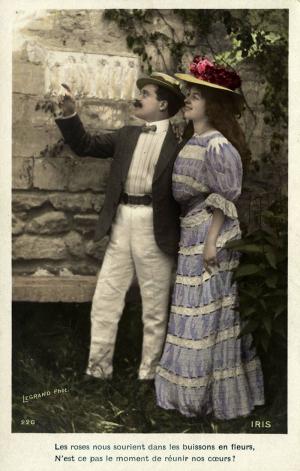
Lists of the pieces on show:
In introduction, the love celebrated
by Doisneau, Ronis, Brassai, Izis, Capa...
>
Chapter 1 : Somebody to love
Rechercher et rencontrer l’âme soeur
Postcards
early 20 th century
Collection of the musée Nicéphore Niépce
BIEM editions
Postcards records
1960s
Collection of the musée Nicéphore Niépce
Manon Weiser
Tinder Man,
the greatest hero of them all
2014
Courtesy of the artist
>
Chapter 2 : Let’s stay together
Moi, je te prends toi ...
Virginie Marnat
Cocottes
2002
Collection of the musée Nicéphore Niépce
Various studios
Wedding portraits
1900 to 2000
Collection of the musée Nicéphore Niépce
Thomas Sauvin
[Beijing Silvermine]
Until Death Do Us Part
2015
Courtesy of the artist
> Chapter 3 : Somewhere only we know
Ma vie de couple
Anouck Durand
How I left
2012
Courtesy of the artist
Jenny Rova
Älskling,
A self-portrait through the eyes of my lovers
2017
Courtesy of the artist
Denis Roche
Proof of time
(extracts)
1970s to 2000s
Prints made in the laboratory
of the musée Nicéphore Niépce in 2000
Collection of the musée Nicéphore Niépce
Anonymous amateur
The album of Robert and Andrée
1960s
Collection of the musée Nicéphore Niépce
Mac Adams
The liminal body,
The threshold between remembering and forgetting
2018
A first-time installation using extracts
from the Robert and Andrée album
Courtesy of the artist
> Chapter 4 : Jealous guy
Amour vache et rupture
Natasha Caruana
Divorce Index
video HD, 5.21 minutes
2017
Curtain of Broken Dreams
2017
Courtesy of the artist
This piece was originally commissioned
by the Open Data Institute as part of the Data
as Culture programme, supported by the National
Lottery and the Arts Council England.
Olivier Culmann
Relics, Antoine’s love life
2002
Courtesy of the artist
Amateur anonyme
Missing heads
1950s
Collection of the musée Nicéphore Niépce
Jenny Rova
I would also like to be – a work on jealousy
2015
Collection of the musée Nicéphore Niépce
François Burgun
Cakes
2010
Collection of the musée Nicéphore Niépce
> Chapter 5 : Nothing else matter
À la vie, à l‘amour, à la mort
Natasha Caruana
Love Bomb
2014
Courtesy of the artist
Photo-montages for the newspaper
Le Petit Parisien
1920s -1930s
Collection of the musée Nicéphore Niépce
Delphine Balley
True Stories
2006
Courtesy of the artist

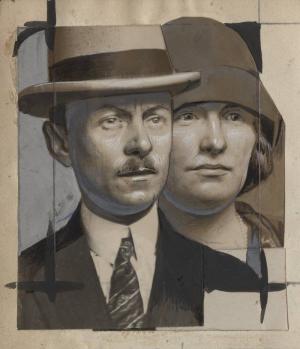
28, Quai des Messageries
71100 Chalon-sur-Saône
phone / + 33 (0)3 85 48 41 98
e-mail / contact@museeniepce.com
Classic website / Français
Virginie Marnat,
From one day to the next
02.16 ... 05.19.2019


Opening / Friday February 15th / 7pm

Virginie Marnat observes the world around her attentively then creates images that question social behaviour, aspirations and illusions. She produces ambiguous representations of reality that we find unsettling as viewers. Her multi-faceted photographic style allows her to highlight the vanity inherent in the models the individual feeds off, revealing postures that are really just appearances, unveiling the real in the invisible.
Marnat’s photographs adhere to the real. They are based on the meticulous,
detailed observation of the everyday, examined as a whole. Her approach is never
one-tracked, throughout her series, she questions appearances making no demands
or denunciations. These realistic scenes, whether documentary or fictional, often give
rise to unsettling feelings for the viewer who is confronted with their realism.
Her posed portraits, the games the models play voluntarily, the way nature is captured
at distinctive moments, all depict the vanity behind the desire to ‘appear’ as an essential
part of the individual. Once this reality is made visible, appearances flake away
to reveal the truth. Her work is often serial, bringing a subtle plurality of approaches
to a subject, in the exploration and individualisation of the same situation.
It was in 1992 that Virginie Marnat first laid the foundations of her process
with the “Les Filles de Dijon
” [ The girls of Dijon] series. We recognise each one
of these girls, we’ve seen them all before, we know them, maybe we even are them,
with their distinctive attitudes and outfits. Each one affirms an identification
with a model rather than their own singularity. Their poses are decontextualized
in front of the neutral backdrop of the studio. Distance is added by the documentary-like
use of black and white. However, if we look longer, the systematism does not come
from the repetition of the photographer’s method, unsettling similarities appear,
and the pictures take on another aspect.
The examination of women’s aspirations and representations features regularly
in Marnat’s work. She photographs scantily dressed women, outside, at night,
lit by what could be the headlights of a car, in often lascivious and provocative poses.
The title of the series reveals theset up: “Toutes mes copines sont des putes
”
[All my friends are whores] (1999). Virginie Marnat asked women to whom she was
close, to pose as prostitutes, with the attending outfits and accessories. Without giving
in to perversion, each friend reveals a part of their personality while revealing their own
projections. Some play with the camera, reproducing poses of transactional sex.
Others, less comfortable in the pose, reveal the tragedy of the situation and the brutality
of the representation. The title is humorous, and can set off a certain reaction
in the mind of the viewer. The realisation that it is a game puts a stop to the moral
reprobation and the voyeurism that is often associated with reportage on prostitution.
The fake, fictional character of the work reflects the viewers gullibility or wakes up their critical senses.
In 2000, Marnat claimed that “La Guerre de Troie n’aura pas lieu
” (2000) [The Trojan War will not take place]. During a residency in Goteborg in Sweden, Marnat depicted three barely-dressed men, wearing only underwear or trousers, carrying plastic warrior weapons and shields. The men are not afraid of ridicule in this grotesque depiction of fake Vikings fighting an invisible foe, instead they play along. Their efforts seem to us to be in vain, so the battle really doesn’t take place.
In “Sans titre
” (2018) [Untitled], a young woman poses against the light, placing various women’s outfits in front of her body and adopting the attitudes she associates with these dresses. She vivaciously brings the characters to life, in a barely visible interior, opening on to a vast blue sky. The realist backdrop is a blend of the inside and the outside, as the window opens on to the world. There is a feel of ambiguity, where everything is interlinked, realism and theatricality, interiority and appearances, being and appearing…
Virginie Marnat’s photographs are built with precision and harmony between the notions present, so that they become visually self-evident. The artist creates representations that oscillate between the plausible and the imaginary through the analysis of all kinds of images, the potential of the photographic medium and her observation of the world. The strong connections she has to painting is surely a contributing factor. Using light effects, contrast and materials, her pictures reveal a reality that isn’t visible. The lightness and luxury of silky fabrics blended with fragments of a feminine silhouette in “Bleus et autre chose
” (2018) [Blue and something else], the strange, unreal landscapes of a twilight scene “Un jour tu verras
” (2005) [One day, you’ll see]… When Virginie Marnat records what she sees, she bestows a certain mystery on it. She makes the invisible visible or invites us to reconstitute the unrepresented in our minds. Photography becomes an allegory, a painting, that includes all of the dimensions of the image in one picture.
When she literally constructs and directs her representations, the relationship to the model, the arrangement of the accessories, the lighting, she connects with the materials, not unlike a painter connecting with the brush and paint on the canvas. All of these elements, whether taken from reality or orchestrated, give rise to visual units, illusions of a reality that the viewer is invited to join.
The ambiguity is present in unexpected ways that could be seen to be banal or traditional. The “Arbres
” (2018) [Trees] series features trees that seem to have been photographed as people, from top to bottom, as living beings emerging from the fog. The veiled atmosphere requires us to consider them as a whole, both above and below ground.
In “Guerriers
” (2012) [Warriors], Virginie Marnat creates a fable-like symbolic representation where young men draped in fabric lie with their eyes closed, posing languorously, in a blinding light. The characters are devoid of context, seeming to sleep or starting to wake. The lack of any notion of space or time gives the scene a universal, timeless feel. The image is direct, its clarity imprinting on the mind, revealing the depths that resonate inside every one of us.
Virginie Marnat continually questions the veracity of the photographic image, creating visual allegories and oxymorons, with grace and subtlety, yet leaving us to our own devices. The unsettled feeling we get deep inside comes from lifting the veil on the complex illusions that are part of our make-up.

Virginie Marnat lives and works in Dijon. After graduating in fine art from the Dijon Beaux-Arts, she went on to study photography at the Brooks Institute of Photography in California in the United States.
In 1999/ 2000, she spent time as artist-in-residence in Goteborg in Sweden. Her work features on the collections of the Consortium de Dijon, the Frac Bourgogne, the Fairpath Foundation (United States).

28, Quai des Messageries
71100 Chalon-sur-Saône
phone / + 33 (0)3 85 48 41 98
e-mail / contact@museeniepce.com
Classic website / Français
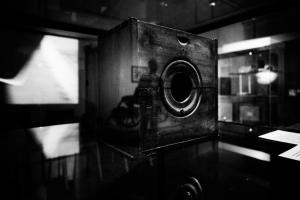
Daido Moriyama
One Summer Day
10.20.2018 ... 01.20.2019

This exhibition on the initiative of the Nicéphore Niépce museum – Ville de Chalon-sur-Saône, was made possible with the collaboration of the Daido Moriyama Photo Foundation and the Akio Nagasawa (Tokyo) and Jean-Kenta Gauthier (Paris) galleries, and the support of Gacon-Cartier et Camuset, Chalon-sur-Saône, the DRAC Bourgogne Franche-Comté and the Japan Foundation.
Daido Moriyama (born in Japan in 1938) is a major figure in contemporary photography. His contrasted, grainy, cropped, blurred work gave rise to new practices, inspiring a new generation of artists.
The art of Daido Moriyama is founded on the work of Nicéphore Niépce and the roots of photography. In his home, in Japan, he keeps a print of the first ever photograph, Le Point de vue du Gras , framed over his bed, to be able to look at it every day. Moriyama’s devotion to the first ever photograph, has led him to follow the path of the inventor; from Tokyo to Chalon-sur-Saône and Saint-Loup-de-Varennes and as far as Austin, Texas.
In the eighties in Japan, Daido Moriyama took pictures of everything he saw as he wandered around. Context is but a pretext. He records what he perceives to be the present and the real in the public space that surrounds him, fuelled by the memory of the first ever photograph. “That arabesque of light and shadow, that scene filtered by light soaked into the depths of my memory, just as if I had seen it myself suddenly one summer day. And that scene, bleached by the sun, at that time, at that place, awakens various memories within me, and is suddenly revived in my fingertips as I snap a picture in the present ”. In 1990, he published a selection of these photographs in “Lettre à St Loup”, like a letter through time and space to Nicéphore Niépce. When he was preparing the book, he got the urge to travel to the places where the inventor lived in order to “feel the lights and shadows and soak up the energy of the birthplace of photography ”. This second phase happened later, in 2008, when Daido Moriyama got a chance to explore the places Niépce frequented, including the exact location of the first shot in the “ View from the Laboratory” series . Finally, on a trip to the United States in 2015, he finally saw and photographed the original of Le Point de vue du Gras with his own eyes, in Texas.
The “Daido Moriyama, One summer day” exhibition is the first of its kind. It includes around one hundred photographs that have been brought together for the first time ever. The show is exceptional as it showcases his work on Niépce’s artefacts, in the very museum that is named after him.
In 1816, Nicéphore Niépce started experimenting in photography. His aim was to fix images in a camera obscura, using light. In a letter to his brother dated May 5, he outlined the premise for mechanical pictures: “I put the machine in the room where I work; […] and I saw, on the white paper, the part of the aviary that can be seen from the window, and a light outline of the casement windows that were less well-lit than the objects outside. […] This is still an imperfect trial […] but with work and lots of patience, I think it will amount to something. It happened just as you predicted, the background is black, but the objects are white, […] in fact, it might not be impossible to change the way the colours work .”
In 1827, from the same window, Nicéphore Niépce took Le Point de vue du Gras, which is today considered to be the oldest photograph in existence. It is a tin plate on which he “recorded” the view from his house in Saint-Loup-de-Varennes, near Chalon-sur-Saône.
Daido Moriyama was born near Osaka in 1938 and got into photography after studying graphics. He moved to Tokyo in the early sixties, starting off as an assistant to big-name photographers such as Shomei Tomatsu and Eikoh Hosoe, and by the end of the decade had become one of the leaders of the avant-garde movement Provoke ; the name of the photography magazine that published the best of contemporary Japanese photography. He made a name for himself straight away with his monograph Japan , a Photo Theater, which was published in 1968. It was to be the first in a long line of photography books (almost 200 to date).
He takes black and white, hugely contrasted, grainy shots with no legend, using non-conformist techniques. His graphic prints, with no text and his immersive installations were to mark the world of photography. He invented a new language that heralded a new era for street photography.
At first glance, Nicéphore Niépce’s work and that of Daido Moriyama seem to be very different. But when we take a closer look at the photographs and delve into the artist’s writings, the influence is obvious.
Nicéphore Niépce’s Le Point de vue du Gras is a personal view of the outside world. It is imbued with the time it took to record the light (it took Nicéphore Niépce eight hours to get a result). At first glance, the photographic landscape appears enigmatic, in particular as the black and white reproduction is the only image that appears in photography history books. It is blurred, extremely grainy, and with very distinct areas of shadow and light. All of these descriptive features are also obvious in Daido Moriyama’s work. In addition to this similarity of form, the artist and the inventor also have similar approaches to their work. One of the driving principles behind Nicéphore Niépce’s invention was that pictures should be copied and shared. Publishing is of the utmost importance to Daido Moriyama, his idea of photography is dominated by the importance of the multiple, printed image.
Since his career began, Daido Moriyama has been haunted by Nicéphore Niépce’s first ever photograph. He writes: “This photograph reminds me every day that we must never forget the origins and essence of photography, and the very existence of dark and light”
In his autobiographical book, “Memories of a Dog” published in 1984, he wrote: “Following my eye’s memory, all the way into the past, the scene of a distant summer day comes alive on the far side of receding time. Probably a view of a back garden seen through a window, what appear to be a house and trees are burned into an asphalt plate. They have lost most of their contour, light and shadow flying past each other in a rough blur, an image that is just like a fossil. This one scene of a summer day presented itself exactly 157 years ago before Nicéphore Niépce, a scientist living in Saint-Lou, in the remote countryside of France. The scene became the world’s first “photograph”. Of course, there’s no way I could have witnessed that scene myself; I encountered it for the first time in a photography book some ten-odd years ago.”
The photographs from 1980 published in the book “Lettre à St Loup” in 1990, are for Daido Moriyama “a recollection of the sacred landscape of Saint-Loup-de-Varennes, and a personal tribute to Nicéphore Niépce, without whom, there would be no photography in the world .”
On a 2008 trip to Bourgogne, he went on a pilgrimage on the trail of the inventor. First, he visited Chalon-sur-Saône, the house Niépce was born in, his statue, the work preserved in the museum, and his camera. Then, he went to Saint-Loup-de-Varennes, where there is a monument to Niépce, and finally, he went to his house.
“As soon as I found myself faced with this view [Saint-Loup-de-Varennes], the image of shadow and light from Niépce’s iconic photograph started to replace the real landscape in front of my eyes and suddenly, I had the feeling that I could see through Niépce’s eyes.”
The photographs he took on this journey were a way of connecting with the inventor, a means to validate his existence as a photographer.
Daido Moriyama put the final touch to this personal, creative journey in 2015. He took advantage of a trip to the United States to go see Le Point de vue du Gras “with his own eyes”. The photograph, which is part of the collections at the Harry Ransom Center, at the University of Texas in Austin, is difficult to observe. There is a reflection from the tin plate and the contours of the objects are almost invisible. But this mattered little to the photographer; after all, the image is already indelibly etched in his memory.




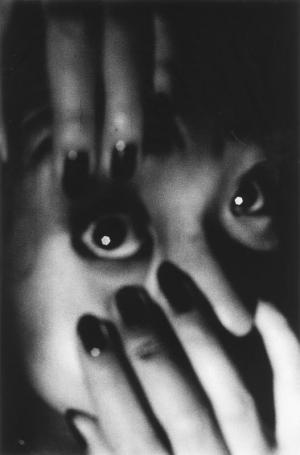
28, Quai des Messageries
71100 Chalon-sur-Saône
phone / + 33 (0)3 85 48 41 98
e-mail / contact@museeniepce.com
Classic website / Français
Artists' Visions
Pictorial Photographs 1890-1960
06.16 ... 09.16.2018
“Pictorialism” is a major chapter in the history of photography. It refers to an aesthetic movement that began around 1890 with the aim of gaining recognition for the creative potential of the photographic image by producing prints demonstrating artistic qualities.
The exhibition is curated by photography historian Dr. Julien Faure-Conorton, a specialist of pictorial photography, in connection with Sylvain Besson at the musée Nicéphore Niépce.
A catalogue accompanies the exhibition, published by Cahiers du Temps Editions,
120 pages, 20 €.
Guided tour of the exhibitionby the curator: Saturday June 16 at 3pm.
Pictorial photographers, in their quest to free photography from the simple function of documentary reproduction to which it had been reduced since its invention, strived to create images where personal feelings took precedence, images that expressed something poetic or dreamlike, that suggested more than they showed, producing, above all, an impression , aiming to provoke a feeling, an emotion in the viewer. To do so, pictorial photographers resorted to interpretation , meaning the intervention of the artist in the photographic process using various technical tools aimed at transforming the aesthetics of the image so that the original photograph (the negative) gave birth to an artistic picture (the exhibition print). At the turn of the 20th century, pictorial photography was extremely popular worldwide with thousands of followers who spread their works in ambitious international exhibitions and luxurious publications.
Offering an updated, broader vision of the pictorialist endeavour on a European scale, Artists’ Visions results from recent research and discoveries and is the first exhibition dedicated to pictorial photography for over a decade in France. Sourced in the collections of the musée Nicéphore Niépce that preserves works by Robert Demachy and Charles Lhermitte, as well as prints by Constant Puyo, José Ortiz-Echagüe and Alfred Fauvarque-Omez, the exhibition brings together over two-hundred vintage prints. They are the work of various authors, some of them famous, others little known even unknown, until now. Most of these prints are being shown for the very first time. They were created over a seventy-year period, from the early 1890s to the late 1950s, showing that pictorial photography did not disappear after the First World War, contrary to what the history of photography traditionally lead us to believe. The narrative has changed and a new history must be taken into account acknowledging the permanence of the pictorialist ideals. These ideals were built on a shared ambition: to create photographs that wanted to do more than simply reproduce the real, photographs that truly interpreted it, like an artist’s vision.

28, Quai des Messageries
71100 Chalon-sur-Saône
phone / + 33 (0)3 85 48 41 98
e-mail / contact@museeniepce.com
Classic website / Français
Jean-Christian Bourcart
An excuse to look, archives 1980-2000
06.16 ... 09.16.2018
extended to 09.23.2018
A friend of mine came by and told me to show my work to the reader’s page at Libé . Jean-Marie and Sophie who work there wanted to publish some of them. I would often go to see them in the basement on rue Cristiani... Jean-Marie published one of my photos – a cow with two extra legs on its back – to accompany letters from people who were ill. The editorial board put a stop to the reader’s letters page, on the pretext that they were shocked at the bad taste”.
The exhibition is curated by: Sylvain Besson / musée Nicéphore Niépce, Jean-Christian Bourcart and C.O. Jones. The exhibition comes to you with the support of DRAC Bourgogne-Franche-Comté. The musée Nicéphore Niépce thanks the Société des Amis du musée Nicéphore Niépce as well as Canson.
Jean-Christian Bourcart’s first steps at Libération
set the tone for his singular vision of photojournalism. In the 1980s, the newspaper was moving away from Jean-Paul Sartre’s original, founding message from 1973: “People, speak up and don’t stop”. The newspaper had suspended publication for the first time and reappeared on May 13 1981, a few days after the election of François Mitterrand as President of the Republic. The paper then entered a golden period. The country was going through an economic recession and the “social democrat daily with libertarian tendencies” adhered to and chronicled the cultural transformations of the French left.
It was the voice of the urban middle classes and reached its highest circulation figures in 1988, at 200 000 issues.
Culture was the main topic of the newspaper which made it a “must-read” for its demanding readership. The tone was set by an eye-catching and often provocative front page, and photography provided an original form for an editorial line that was unique in France in the 80s and 90s. Photography at Libération was far from being a style exercise. Few of the photographers were aware of the layout’s references, “VU” was now just a model for Christian Caujolle, the man behind the paper’s photographic policy. Photographers took their influences from elsewhere. Rock and roll, and in particular, punk rock was prevalent, nightclubs popped up constantly, sex was everywhere, underground literature and drugs were a huge part of the scene. This backdrop provided inspiration for the work, often encouraged and supported by the paper’s editors. The relationship between the pictures and the writing was set down by journalists who saw no difference between their personal lives and their journalism. Writers like Serge Daney, Michel Cressole, Hélène Hazéra, Alain Pacadis, much to Serge July’s chagrin, produced a daily that is more like a magazine!
The photographer at Libération was a master of time. He or she was the image-maker, as defended by Christian Caujolle, head of the photographic department from 1981 to 1985, as opposed to being the simple illustrator the editorial departments wanted them to be. The image spoke to the text. No longer reduced to a mere legend, the commentary and the image were one as they were complementary. In this way, photography at Libération was documentary, with one main difference, the approach was one of closeness and empathy.
The ambition was to give the double pages life, to find a rhythm between the various types of signs. The eye was not supposed to rest if the image questioned it. It came with an emotional charge, based on the photographer’s own commitment, as an auteur who was naturally suspicious of the pseudo-neutrality of the job at hand. A reportage was never just a suite of icons and information. The concept was not a million miles away from Rodtchenko’s proposition, the single series could bear witness to a situation: “It must be made clear that documentary photography never provides an absolute portrait!” Images followed on from one another in a clarifying narrative. Temporal, circular sequences extolled material that was thick, foggy, contrasted. Coherence was possible only in the affirmation of an “ethic” where truth was not a subject in itself. The commitment of the photographer, his or her willingness not to dress up the real, to truly feel it and present it in its rawest form, was the crux of the issue. One picture, as part of a whole, was just one element, often a weak one, that only found its true place as part of a series. As in life, photography had its ups and downs. In this redefinition of reportage, Libération was unique in that it never judged what was being shown. “Modern” reportage called for going beyond the merely informative. Getting closer to people and situations was the photographer’s only objective who often used his or her personal experience as the very subject of a documentary project aimed at all of society. Examining the world was a question of aesthetics and semiotics. The photographic document, published and reproduced, was a project that depended on luck to an extent, but that transcended it to follow the publication’s plan.
The paper’s photographic approach was unique because of the way photographs were commissioned. In 1994, Christian Caujolle, made reportage the emblem of an “unease felt by photographers about the press, that revealed the way “auteurs” were obliged to question the relation to the real, the “realism” of the images, their use and the aesthetics”. Irreverence was the common signature but the model remained literary. The paper brought new things to the table every day. Nothing was sugar-coated. The general framework took a back seat to the salient traits. Images presented situations and characters that were often anodyne, with no introduction or explanation. In a text published in 1973, in Cause commune , Georges Perec expressed the feelings of a generation that no longer recognised itself in the daily press: “Newspapers talk about everything, except the everyday things. Papers bore me, they don’t teach me anything; what they print is of no interest to me, doesn’t question me and neither does it answer the questions I have or I want to ask”. Photography was to be an attempt to banish the extraordinary in order to redefine the notion of an event, depicting the banal, the normal, the everyday, the little nothings that give existence a real meaning. Jean-Christian Bourcart’s work looked for “news” in moments that were considered to be unimportant. Portraits and situations came together to form a vast continent that was without any surprises but was extremely real. It constituted a form of photography that was both flat and hysterical. His work told stories that could conceivably happen to the reader. The narrative, we’ve already pointed out, was not there to exhaust the subject. The writing was fragmentary on purpose, even elliptical, but all of the subjects dealt with in Libération provided an anthropological inventory of France. The typical Libération photographer, in particular Bourcart, could not be referred to as an anthropologist, but the publications must be seen as attempts to go outside the box, a refusal traditional news. This way of working presupposed a commitment from the photographer, a way of going down roads less taken that was not the accepted practice in the big photography agencies of the period. For a time, Viva and Sipa managed to express this paradigm shift, the attempt to make the everyday more theatrical: “the art of documenting the inability of monopoly capitalism to create truly human living conditions…” [ Allan Sekula].
In fact, what Bourcart did was take portraits of the unique. From the mental patient to the weight lifter, from the politician to the night clubber, one “life story” followed another. The photographer was thus the centre of the newspaper’s paradox. At the end of the 1990s, the daily still had photographers that subscribed to the 1973, manifesto: “People, speak up and don’t stop”. The photography built a world, brick by brick, character by character, and appropriated a reality that was made from simple situations and words. Unlike the glorious elders [Magnum], its photography narratives were not aiming to be works of art. The world was an exchange between the person taking the photo and conscious, trusting characters. The task was complex. The traps were legion, as one had to make sure to adopt a non-causal point of view, to hide aesthetic criteria of class under a bushel, and above all, never to add to what others were saying, the pitfalls were too numerous. The “great narrative” remained tempting for the photographer who saw himself as another Capa or Caron! Some were able to resist the sirens. They managed to treat photographs as significant artefacts, and not as privileged objects. As such, they can be seen as anti-humanist!

28, Quai des Messageries
71100 Chalon-sur-Saône
phone / + 33 (0)3 85 48 41 98
e-mail / contact@museeniepce.com
Classic website / Français
Le chic français
02.10 ... 05.20.2018
opening / Friday February 9th at 7pm
Le Chic Français
Images of women, 1900-1950
The show entitled “Le Chic Français” is a retrospective of the history of fashion photography at the start of the 20th century through more than 300 pieces from the collections of the musée Nicéphore Niépce. It occupies two of the museum’s temporary exhibition spaces and the photographs and magazines illustrate a history that is closely linked to the changes in the place of women in society.
Early fashion photography was timid and lacking in audacity. A number of fashion magazines existed at the start of the 20th
century but most illustrations were drawings. While in the media, fashion photography developed at the same rate as general photography, up until the 1920s, technical printing constraints means that it was not often used. The photographers worked in studios, the models didn’t move and the layouts were stiff and uninspired. This way of depicting fashion and clothing was obviously a reflection of the position women held in society.
In the 1920s-30s, a “New Vision” took over. Photographers like Jean Moral, Maurice Tabard and André Steiner, took photography in a different, resolutely modern direction.
The inter-war period saw photography and magazines accompany the emancipation of women in society. Photographers began to experiment, coming up with spectacular angles from which to shoot, daring compositions and modern subjects; they provided a new image for the modern woman, a vision that was finally free.
These multi-faceted photographers were recruited by the fashion industry and brought their experience and skill to the table when working for magazines. The result was an image of a modern, chic, dynamic and urban femininity. The shoots finally got to leave the studio and use the streets of Paris as a backdrop, leading to the city coming to be regarded as the fashion capital of the world.
The exhibition presents work by the following photographers, among others:
Henri Manuel
Paul de Singly
Charles Lhermitte
Edward Steichen
Pierre Boucher
André Steiner
Horst P Horst
Maurice Tabard
Francois Kollar
Laure Albin Guillot
Germaine Krull
Daniel Masclet
Man Ray
Roger schall
Jean Moral
…
And papers and magazines such as:
Art Vivant
Comœdia illustré
Harper’s Bazaar
La mode illustrée
Jardins des modes
Vogue
Vu
Paris Match
Diversion
Paris Magazine
…
This exhibition is produced with support from the Ville d’Evian and was shown from October 28 to January 21 2018 at the Palais Lumière.
Curator: Sylvain Besson - musée Nicéphore Niépce
Scenographers: Sylvain Besson - musée Nicéphore Niépce and LePetitDidier

The representation of fashion in drawings - the early days of women’s magazines
In the late 19th century, women’s weekly magazines, which were aimed at a disparat readership, featured the latest fashions along with large numbers of descriptions and fashion plates. The magazines were printed in large format and favoured the use of narrative to describe the models. The illustrations, in the form of etchings, were particularly detailed. These magazines provided a means of staying up to date with the latest developments and provided everything dressmakers needed to reproduce the items depicted. Whilst some studios seemed eager to specialise in fashion photography, the printing costs involved restricted the use of photographs in the press. Drawings and their reproduction in the form of fashion plates remained the favoured media.
La Gazette du Bon Ton
In 1912, influenced by the aesthetic of the Ballets Russes, the fledgling Art Deco moveme and the couturier Paul Poiret, Lucien Vogel launched a new magazine, La Gazette du Bon Ton , which would transform the fashion press. He surrounded himself with the best artistic talents of his day and created a whole new kind of magazine. La Gazette duBon Ton was a small-format upscale publication which was aimed at a well-to-do clientele. It was also available at the shows of the great couture houses.
The first studios - photography replaces drawings
During the first few decades of the 20th century, photography gradually came to the fore, particularly in the non-specialist press. L’Art vivant and other theatre magazines promoted fashionable attire through photography, employing an almost journalistic approach (Studio Séeberger and Manuel). Influenced by the Pictorialists, “artistic” photographers such as Baron de Meyer offered a new approach to fashion photography. Since then, drawings and photographs have coexisted in women’s magazines.
Fashion photography and inspiration from the Pictorialists
In the late 19th century, fashion photography drew to a large extent on the techniques of “Pictorialism”, a photographic movement which cherished one obsession: to raise photography to the status of a fine art. These techniques, when applied to fashion photography, did not seek to convey a sense of naturalness but rather to accentuate the theatricality of the scene. What fashion photographers wanted was to create an intimate yet elegant atmosphere.
Le Jardin des Modes
Le Jardin des Modes was intended to be a “genuinely practical glossy magazine”. The illustrations, therefore, both drawings or photographs, were designed to make dressmakers’ work easier. The main photographers who worked for Le Jardin des Modes were Maurice Tabard, Georges Saad and Horst P. Horst. The illustrations were provided by Georges Lepape or Paul Iribe.
VU
Created by Lucien Vogel, VU was the first current affairs magazine to include photography. The combination of text and pictures made perfect sense and photographs no longer simply served as illustrations. It was in VU that photojournalism was born. New page-setting possibilities enabled the creation of a publication which was more modern and easier to read.
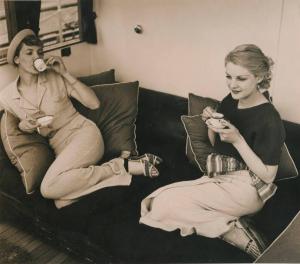
The illustrated fashion press and the avantgarde - Jean Moral
Jean Moral’s early photographic career was inextricably linked to his relationship with Juliette Bastide. He photographed her during their romantic travels, always taking his shots outdoors. Juliette, happy and smiling, willingly played along. These dozens of snapshots were published and exhibited and earned Jean Moral celebrity status in the early 1930s. In 1933, he began a successful collaboration with Harper’s Bazaar . The only French photographer working exclusively for the famous magazine, Jean Moral possessed a style which suited the new graphic and editorial style of the new Harper’s Bazaar : shots taken outside the studio, daring camera angles and immediacy. Jean Moral employed all the tools at his disposal to portray the woman of the 1930s: modern, chic, urban, dynamic and, of course, Parisian.
28, Quai des Messageries
71100 Chalon-sur-Saône
phone / + 33 (0)3 85 48 41 98
e-mail / contact@museeniepce.com
Classic website / Français
Fnac :
A collection that sets an example 2 /
A window on the world
10 14 2017 ... 01 2018
![Jean-François Bauret [1932-2014] Isabelle, Paris 1985 Acquisition for the Fnac’s photography collection: 1988 Jean-François Bauret [1932-2014] Isabelle, Paris 1985 Acquisition for the Fnac’s photography collection: 1988](/var/ezflow_site/storage/images/exposition-en/actuelles/expo-fnac/fnac2/44196-1-fre-FR/FNAC_smartphone.jpg)
The Fnac, France’s leading retailer of cultural products, lends great importance to photography. It sells cameras, organises photography competitions, opens and runs galleries and has had its own photograph collection since 1978... This collection includes up to 1800 prints and covers the major trends in photographic history. This exhibition will cover three areas, the thirties avant-garde movement, the humanists and the representatives of the photo agency Magnum.
When Max Théret founded the Fnac in 1954, he readily admitted that he deliberately chose a name that “snaps like Kodak” for the brand. This explicit reference to photography can be seen as the starting point of the brand’s involvement that is still going strong over half a century later. Under Théret’s direction, and that of André Essel, photography took centre stage at the Fnac: in 1956, it began selling cameras and equipment, followed by photography competitions for clients and the photo galleries were inaugurated in 1969. Thanks to touring exhibitions, meet and greets with photographers, publishing, sponsorship of institutional initiatives, the Fnac soon became a major player in photographic circles in France and Europe. These initiatives had a number of aims: to sell photographic equipment of course, to support creativity and artists, to bring a different perspective to the other cultural products on sale at the Fnac, to make the stores into true living spaces where cultural debate flourished and to encourage the public to reflect on current affairs through photography. From 1978, the Fnac started a collection that has been continuously enriched ever since, curated first by Gil Mijangos, then by Laura Serani. The approach is wide-ranging and the collection has always been a great showcase for diversity in photography. All of the major trends are covered: humanism, war photography, thirties avant-garde, fashion photography etc. The collection bears witness to the activities of the photographic galleries and represents the effort made by the Fnac to educate and satisfy the taste of all of its potential clients. The Fnac’s photographic collection reflects photography in all its diversity, providing a timeline to a certain idea of its history. Above all, it provides a certain view of the world.
The 1930s
The main figures of photography in the thirties provide the lynchpin
of the Fnac collection. It was a time when photography became a noble art form,
the notion of auteur was recognised, photos were widely published in the press
or in monographic books. The brand thus includes a real part of photographic history
in its collection. The artist who features the most is the experimental surrealist Man Ray
(superimposition, solarisation) with over 100 prints in a collection that numbers 1800.
Other major players complete this body of work: Brassaï with “Paris de nuit”,
André Kertész, Maurice Tabard, some early work by Erwin Blumenfeld and the first
photograph by Martin Munkácsi to be published in Harper’s Bazaar
in 1934.
The Humanists
In the eighties, the general public developed a love for humanist photography
that became “fashionable”. The Fnac followed the trend and encouraged the renewed
interest in the work of Édouard Boubat, Willy Ronis and Robert Doisneau, three French
photographers whose work depicted a certain idea of working-class, post-War Paris
in a poetic, tender manner.
Photographing fashion
Since the thirties, the most forward-thinking of photographers have always
regularly collaborated with women’s fashion magazines, a genre that always knows how
to attract the most creative of artists to boost its pages visually. Man Ray alternated
working with Vogue
and Harper’s Bazaar
, Erwin Blumenfeld’s Vogue
covers, shot
between 1941 and 1955 are well known. A number of photo-reporters also tackled
the subject, Pierre Boulat did a piece on the Yves Saint Laurent fashion house that was
shown in the Fnac galleries in 1994. William Klein came back to his fashion beginnings
in the eighties with large format, painted contact sheets. Other artists work only
in this field like Frank Horvat or Henry Clark. The Fnac organised a number of shows on the theme, taking advantage of the industry’s
glamour and allure to attract the general public into the galleries and stores.
Photographing the stars
The Fnac is above all a commercial entity, the objective of which is to sell
cultural products: films, books, discs. As such, the photo galleries are the ideal places
in which to showcase the people who produce the aforementioned art. Photographs
of emblematic artists taken by big name photographers are part of company’s
communication strategy. In the world of cinema, portraits of icons are the most
common: Marylin Monroe, Ingrid Bergman and Brigitte Bardot, taken by David Seymour,
Léo Mirkine – a set photographer who also specialised in film star portraits –,
Eve Arnold and Yul Brynner. But the other arts are also covered with portraits of writers
like Jacques Prévert, Virginia Wolff, Samuel Beckett and André Gide by Gisèle Freund,
of the musician Elvin Jones, or of the artists Diego Rivera and Joseph Beuys, all
of whom feature in the collection.
Magnum Photos
The Magnum agency was founded in 1947 by Robert Capa, as a cooperative
of photographers who wanted to cut out the middle man between photographers
and publishers so that the members of the agency could retain rights to their work.
The company defends and supports photographers who have a singular, original take
on the world. The Fnac has always supported auteurs and artists by organising events,
round-table discussions, meet and greets, exhibitions and enables them to reach
a market with their work. The collaboration was a no-brainer and lasted for ten years.
It resulted in a number of exhibitions and the acquisition of many pieces for the Fnac’s
photography collection.
Support for contemporary artists
The Fnac’s photography galleries are not restricted to showing the work
of established artists, they also provide solid support to a number of independent
photographers, all of whom show an individual and original approach to photography
and a strong visual style. Jean-Christophe Béchet, Denis Dailleux, Bernard Descamps,
Isabel Muñoz and Max Pam featured in exhibitions and had their work bought
by the galleries. The Fnac is a patron of photography and a trend-setter for new work.
It outlines new trends, finds the photographers of tomorrow. It creates expectation
and incites curiosity for its exhibitions, forging an image of an innovative, forwardthinking
brand in artistic terms in film, music and literature.

![Antoine d’Agata [1961] Untitled, Pedras Negras 2000 Acquisition for the Fnac’s photography collection: 2004 Antoine d’Agata [1961] Untitled, Pedras Negras 2000 Acquisition for the Fnac’s photography collection: 2004](/var/ezflow_site/storage/images/exposition-en/actuelles/expo-fnac/fnac/44188-1-fre-FR/FNAC_smartphone.jpg)
![Martin Munkácsi [1896-1963] Rio de Janeiro 1932 Acquisition for the Fnac’s photography collection: 1992 Martin Munkácsi [1896-1963] Rio de Janeiro 1932 Acquisition for the Fnac’s photography collection: 1992](/var/ezflow_site/storage/images/exposition-en/actuelles/expo-fnac/fnac3/44204-1-fre-FR/FNAC_smartphone.jpg)
![Maurice Tabard [1897-1984] Composition 1931 [ print in 1988] Acquisition for the Fnac’s photography collection: 1987 Maurice Tabard [1897-1984] Composition 1931 [ print in 1988] Acquisition for the Fnac’s photography collection: 1987](/var/ezflow_site/storage/images/exposition-en/actuelles/expo-fnac/fnac4/44212-1-fre-FR/FNAC_smartphone.jpg)
![Pierre Boulat [1924-1998] Yves Saint Laurent 1961 [modern print ] Acquisition for the Fnac’s photography collection: 2002 Pierre Boulat [1924-1998] Yves Saint Laurent 1961 [modern print ] Acquisition for the Fnac’s photography collection: 2002](/var/ezflow_site/storage/images/exposition-en/actuelles/expo-fnac/fnac5/44220-1-fre-FR/FNAC_smartphone.jpg)
28, Quai des Messageries
71100 Chalon-sur-Saône
phone / + 33 (0)3 85 48 41 98
e-mail / contact@museeniepce.com
Classic website / Français
Your papers please !
10 14 2017 ... 01 15 2018
Papers, please !
This exhibition title in the form of an injunction aptly underlines the relationship between photography and law enforcement, which dates back to when it was first used in the court process in the middle of the 19th century. At some point in time, we have all had to present proof of our identity, an exercise
that if it does not define who we truly are, is the inescapable manifestation of our legal identity. Ever since it was invented, photography has ceaselessly complied with the requirements of identifying people and the desire to put them on file, a theme that is still topical today. Based on the musée Nicéphore Niépce’s collection, this exhibition aims to present an [inevitably incomplete] view of photography’s ambiguous relationship with this role that it has had to assume and the whole question of police records.
Photography provides a frame of reference, an interpretation of the meaning of identity, from having a passport photo taken to presenting your driving licence to the police, or from a census for national service to registering the identity of migrants. If the standards applied and the repetitive nature of the process lead to a form of depletion that is an integral part of the process, the images nonetheless reveal hidden meanings and sometimes exhibit more than what was expected and intended. In part a means of organising society and partly a system of surveillance that exposes the temptation to curb personal freedoms, the image-based registration and classification process unintentionally reveals – in its mistakes, blunders and omissions – a whole world outside the camera frame made up of discrepancies, absurdities, fantasy and imagination.
There’s no escaping it
Whether it’s for a driving licence or passport, a travel card or a student card
or even in some countries your national health card, one day or another we all have
to go through the troublesome process of having our ID photo taken.
In line with the anthropometric principles established by Bertillon and, irrespective
of whether the photo is taken by a professional photographer or in a photo booth,
it must comply with a certain number of criteria and standards that determine whether
the image in question is acceptable or not for official use.
In France, it was during the Vichy regime that the obligation to record the identities of the entire population was instituted, thereby widening the scope of the identity controls that were until then reserved for minorities who were considered a danger to society. On the other hand, identity papers have been required to leave the French territory since 1913, an obligation that was implemented both with an eye to restricting circulation between France and foreign countries and to hinder the arrival of foreigners. So in fact, the original idea behind ID papers was all about controlling the borders, which is pertinent in our current times when the flow of migrants and the free circulation of people have become once more major political and social questions.
Photography at the service of a system
The French police photograph system, which produces what are more commonly known in English-speaking countries as mug shots, was created by Alphonse Bertillon [1853-1914] and such photos are still a central element of police records today. Bertillon is an emblematic figure in the history of the French police to whom is attributed the creation the first police forensic laboratory. In 1881 in Paris, in a general political context marked by the battle to reduce the number of repeat offenders, he devised a system using anthropometry for criminal identification purposes: a system of measurements and physical characteristics that placed the body at the centre of the identification process. In 1888, Alphonse Bertillon completed his system by standardising the mug shot, which henceforth had to be taken from the front and in profile. He codified every aspect of the process [the camera used, the subject’s pose and distance from the camera, as well as lighting etc ].
The technical quality of the images had to be sufficient to establish precise points of resemblance and to ensure it was possible to produce a large number of images on a daily basis. The Bertillon system or ‘Bertillonnage’ triumphed at the Paris Exposition Universelle in 1889 and was rapidly adopted across Europe, Russia and the United States. Between 1885 and 1914, legislation against recidivism in France would lead to more than half a million people being put on file. As soon as the system appeared, however, Bertillon’s wrongful identifications were denounced and the possible dangers and abuses of such a system were pointed out. Its errors and imprecision, as well the specific form of the mug shot, soon became a subject of reinterpretation as artists such as Mac Adams gave a new twist to the subject by making use of the specific codes of the genre to question the spectator’s world view, the play of appearances and the ambiguity of the photographic image when confronted with reality.
A source of scandals
No less than a cultural phenomenon, police identification photos were the subject of enthusiastic interest from the press as soon as they were invented. It wasn’t long before mug shots, even if their main function was to assist the police in their investigations, were nonetheless used to illustrate news items in newspapers such as Détective
, Le Magasin pittoresque
and L’oeil de la police
… At the end of the 19th century, a current of sensationalism overwhelmed the press, fuelling the imagination of readers in the same way as detective novels and reinforcing the credibility of the police forensic department.
A securitarian utopia
The arrest photo can be traced back to the origins of photography and, if some people recommended its use primarily to keep track of criminals and record repeat offenses, putting people on file was for a long time mainly limited to minorities who were considered dangerous with the aim of keeping certain members of society under surveillance. The visual identification of certain categories of the population who were a cause for concern – foreigners, travellers, bohemians, drifters and criminals – because a new and vital question for many European states. According to Bertillon himself, the process usually reserved for criminals could also be applied to ‘professional’ or ‘ethnic’ types. It was in this context that in 1912, a system of identification was instituted in France that saw the elaboration of an anthropometric card for nomadic populations in which Alphonse Bertillon took an active role. For the very first time, populations judged solely for their chosen lifestyle were obliged to carry a document that not only stigmatised them, but also legitimised their exclusion from the national community. It wasn’t until June 2015 that the French parliament voted the abolition of the ‘livret de circulation des gens du voyage’ [ special permit for travellers ] whose origins can be traced back to the identification system of 1912. Migrants, residents of colonies and occupied territories and prostitutes…Other populations which were conspired to constitute a risk were also subject to large scale registration operations, always for the purpose of control and social discipline.
A step sideways
Sometimes however it is out of the very context of surveillance and control of the population that an act of resistance is born, a step sideways that lets individuality and personality show through, and reveals the individual’s disapproval of the standardisation of a group. In the middle of the Algerian War, when the photographer Marc Garanger [ who was a soldier at the time] had to take the photos of women who were forced to remove their veils, or when Virxilio Vieitez took the portraits of the inhabitants of villages in Galicia in Spain under the reign of Franco for identity cards that had become obligatory, the process used and purpose of these images were not supposed to leave any doubt as to their message and future use.
And yet, the serious faces of the subjects, the jewellery and clothes they chose, the expression in their eyes and the meaning it conveyed and finally the photographic gesture itself are like interstices into which the unexpected, as well as a certain form of revelation can slip and transcend a system that is intended to be cold, rigid and scientific. Sometimes out of this highly standardised system, a whimsical and out of place gesture is born. One example is the actions of the Paris Vice Squad which, on May 4th 1990 during the arrest and expulsion of 800 transvestites from the Bois de Boulogne, took mug shots of the transvestite prostitutes, most of whom were Brazilian. To this first official image, they added a second portrait with a twist, a close-up in which the subject of the photo was free to pose for the camera as they pleased, with an attitude and expression chosen by the model himself that shifted the process giving it a whole new meaning and intention.
Exhibition co-produced with La Chambre Strasbourg, the collections of the musée Nicéphore Niépce and Ivan Epp, a private collector from Strasbourg

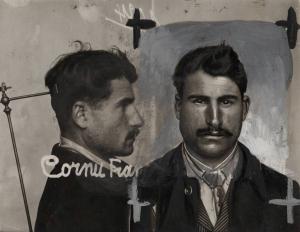
28, Quai des Messageries
71100 Chalon-sur-Saône
phone / + 33 (0)3 85 48 41 98
e-mail / contact@museeniepce.com
Classic website / Français
Colorama
Life in Kodak
06 17 ... 09 19 2017
Opening / Friday June 16th 7pm
Curated by François Cheval, Caroline Lossent, Gilles Mora
Prints : museum Nicéphore Niépce laboratory on Canson Infinity Photosatin premium RC 270g
Exhibition co-produced with the Pavillon populaire, espace d’art photographique de la Ville de Montpellier, with the support of the Ministry of culture – DRAC Bourgogne Franche-Comté and the Friends of the Nicéphore Niépce museum Acknowledgement: Kodak France The George Eastman House, Rochester, USA CECIL (Cercle des conservateurs de l’image latente)
Coloramas, panoramic images in exceptional dimensions were used as early as 1950 to promote the Kodak brand. These 18 metre prints were posted in Grand Central Station in New York and quickly became known as the biggest photographs in the world. They promoted the brand’s cameras and remain the most obvious expression of the post-war American dream with their spectacular, almost surreal scenes.
From 1950 to 1990, the American firm Kodak produced Coloramas : panoramic images that were coloured and printed in monumental sizes (18 metres wide and 5.5 metres high). These brightly coloured, back-lit transparencies were installed in New York City’s Grand Central Terminal. They were replaced every three weeks and became a veritable visual rendezvous for passengers, inspiring much excitement and comment.
These exceptional advertisements went beyond the promotion of Kodak cameras, they depicted a version of a perfect life immortalised by photography. The complex process was entrusted to a few well-known photographers (Ansel Adams, Eliot Porter, Ernst Haas), and mainly to the company’s in-house photographers.
The creation of the panorama proved to be particularly complex. The Colorama was 18 metres wide and 5.5 metres high and each stage of the manufacturing process required the resolution of unprecedented issues, so it was quite an achievement. All of the proportions were off the charts. The complex question of optics was compounded by the limitations of Ektacolor . Traditional panoramic cameras designed for landscapes were adapted and tinkered with by the technicians at Kodak. The developing process required a specific enlarger made at the main factory in Rochester. The whole operation took sixteen hours! The retouching phase was also vast. Faults over a 100 m² space had to be corrected. The final image was made from 41 strips of positive transparencies.
Much more than a panorama, the Colorama was a form of mass entertainment and a monument to fifties optimism. Viewers saw themselves or wished they could see themselves inside this appearance of harmony, these scenes of timeless and endless happiness, where the sky was always blue, nature was always vast and unspoilt, where the family was always together, surrounded by objects that provided well-being and fulfilment.
Taking its lead from the American Dream, the Colorama affirmed a certain model and the values that went with it: those of the new consumer society.
Each image regurgitated the values of white, Anglo-Saxon, materialistic and patriotic American society, the pioneering myth. It wasn’t until 1967 that African Americans were to appear. The Coloramas were not there to bear witness to American society, but to create an image of serenity that would incite people to buy Kodak products. The naive, fake feel to these scenes was obvious, even appreciated as it provided a break from everyday worries. Just like an episode of a television series, each Colorama was the equivalent of another, the one before and the one after. Featuring a confident materialism and a certain American way of Life, it contributed to the elaboration of a benevolent frame of reference, and the constitution of the collective unconscious. Taking its lead from the American Dream, the Colorama affirmed a certain model and the values that went with it: those of the new consumer society.
Each of the 565 Coloramas produced over a forty-year period was a one-off, and they were all destroyed after use. The prints in this exhibition were made in our museum laboratory, from film from the fifties to the seventies preserved in its collections, in order to carefully reproduce the American firm’s visual marketing.
Publications :
La vie en Kodak
Colorama publicitaires des années 1950 à 1970
Texts : François Cheval and Gilles Mora
Editions Hazan
146 pages
2015
ISBN : 9782754108188

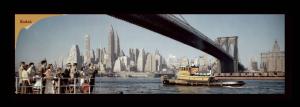

28, Quai des Messageries
71100 Chalon-sur-Saône
phone / + 33 (0)3 85 48 41 98
e-mail / contact@museeniepce.com
Classic website / Français
Above all else
Photography and the functional object
06 18 ... 09 18 2016
Opening / Friday June 16th 7pm
Exhibition produced with the support of the Ministry of culture – DRAC Bourgogne Franche-Comté and the Friends of the Nicéphore Niépce museum.
Curated by Anne-Céline Borey
In today’s world, the photographic image is omnipresent. Since its invention, photography has slowly infiltrated every layer of our lives. It is our main means of representing ourselves and the world around us and acts as a direct or indirect mirror to who we are. The development of photography has gone hand in hand with the emergence of the consumer society, in which the functional object, whether craft or mass-produced, occupies a dominant place. The presence of photographs on countless everyday objects questions the relationship we maintain with the image, and the value we attribute to it.
The years that followed the revelation of the invention of photography saw the beginning of a multitude of experiments to improve the process. Two questions arose during this time of technical effervescence: that of reproducibility and inalterability. In fact, the first photographic processes did not allow for reproduction, and once produced, the copies were extremely fragile. While some research concentrated on the reproduction of photographs using printing techniques, others led to trials using various channels. In 1854, a patent for a “new system for the production, indelible fixing and colouring of photographic images using ceramic decoration techniques” was registered by two painters, Pierre-Michel Lafon de Camarsac and Léon Joly. Around the same period, Charles Nègre patented a process on metal. Louis-Alphonse Poitevin and many others experimented on porcelain or opalin.
Given its capacity to faithfully render the world, to retain a trace of that which is destined to disappear, photography is a means of filling the gaps in human memory. In the intimate, family space, it enables the remembrance of past events, loved ones who are far away or have passed. It reduces spatial and temporal distances.
These snatches of private stories take diverse forms. Framed photographs, family albums appeared progressively in homes during the second half of the 19th century. The need to have easy access to these images led to them being printed on everyday objects. During the First World War a whole industry grew up to produce precious objects to transport and keep safe portraits of loved ones separated by the conflict. Technical advances – and some improbable tinkering... – enabled photography to invade the everyday environment, inside the home or in the luggage of the traveller, even to mark a final resting place.
Today, photographs can be fixed on to so many objects that we no longer really pay any attention. Photography has become an element of interior decor, either relative to the object or wildly out of place. We do our grocery shopping with a bag covered in fruit and vegetables, we serve meals on plates that include a full recipe and we drink coffee from cups decorated with little cats!
From the seventies on, the advances in techniques meant that photos could be printed on more and more diverse objects and shapes. With the advent of digital technology, images can now be mass printed industrially or individually using personal photographs. It is now so easy to hand over a loved one’s photograph to a specialist internet site to have it printed onto mugs, cushions, medallions… The calendar, a classic, was the first object to bring photography into the home.
Contrary to what we keep in our memories, the term “souvenir” (‘to remember’ in French) also designates the wide range of objects sold in tourist or pilgrimage sites. We tend to buy them in order to appropriate the location a little, to prolong the enjoyable moments of discovery, to be able to say “I was there”.
On returning from a trip, as everyday life resumes once again, the souvenir can be useful. It can take on domestic shapes to an absurd extent. The photo-covered pot, plate or cork generally ends up being purely decorative…
Collective enthusiasm or indignation can be fertile ground for the manufacturing and marketing of various knick-knacks, decorated with photographs, often of doubtful quality. They are evidence of the modern world’s haste to establish the “historic” nature of certain events.
From the Pope to the British royal family, from Mao Tse Tung to Barack Obama, from movie stars to pop icons and sporting heroes, the representation of public figures on everyday objects can reveal diverse intentions.
We might be tempted to read into this a deformation of ancient tradition: emperors and monarchs of old had coins stamped with their effigy, the faithful in the sanctuaries with images of their Gods…
From the point of view of the buyer of these objects, the idea is to appropriate some of the aura of the celebrity by bringing them into their daily lives, to the point where the collection can become an obsession. They are inaccessible but we can own them a little.
From the point of view of the manufacturers or those who order the products, very rarely the subject themselves, the motivation is essentially commercial …

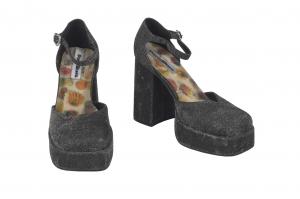
28, Quai des Messageries
71100 Chalon-sur-Saône
phone / + 33 (0)3 85 48 41 98
e-mail / contact@museeniepce.com
Classic website / Français
Henri Dauman
The Manhattan Darkroom
02 11 ... 05 21 2017
opening / Friday February 10th at 7pm
Henri Dauman, a French photographer, born in Paris in 1933, emigrated from France to America in 1950. He found the elegance of Manhattan fascinating from day one and developed a series of architectural photographs of New-York. He never stopped photographing the city.
From encounters to commissions, his choice subjects included Marilyn Monroe, Jacqueline Kennedy, Andy Warhol and Elvis Presley. He became a well-known photo-journalist and worked with all of the big name American and French publications: Life, the New York Times, Paris Match… Dauman bore witness to huge advances in American society with his work on the civil rights movement in particular. He considered the freedom of the photographer to be a moral act and a struggle.
Exhibition co-produced with Muse Association.
with the support of CANSON, the Ministry of culture – DRAC Bourgogne Franche-Comté and the Friends of the Nicéphore Niépce museum
Original idea by Vincent Montana
Curated by François Cheval, Audrey Hoareau, Emmanuelle Vieillard
www.manhattan-darkroom.com
The Manhattan Darkroom, a retrospective of the work of French photographer Henri Dauman takes the public on a journey through the recent history of the United States.
From Andy Warhol’s first exhibitions to the beginnings of Minimal Art, the exhibition illustrates the advent of a dynamic and thriving artistic scene. New York is a crucible for these transformations, with its flourishing avant-garde embodied by Merce Cunningham, Philip Glass or Walter Carlos. John V. Lindsay and John Fitzgerald Kennedy experiment with new forms of political marketing; communication changes and Henri Dauman’s work echoes these changes. In the increasingly fast-paced 1960s, women, African-Americans and other minorities take to the street to claim their rights. In Life
or the New York Times
, Henri Dauman’s photographs document these evolutions, with his faithful and original style. More than a photography exhibition, The Manhattan Darkroom
is a testimony to modern America.
Henri Dauman was born in 1933 in Paris. After losing both his parents in the Second World War, he emigrated to the United States in 1950. Joining his uncle in New York, he settled there with his camera to start his career as a photographer. Beginning as a correspondent for French and international media, he joined a flourishing roster of American news magazines, keeping a freelance status which also allowed him to work for the New York Times’s culture supplement. Henri Dauman’s qualities - bilingual, enthusiastic, and with a personal style - were widely appreciated. Magazine editors who praised his subtle and efficient sense of composition, his close relationships with his subjects and his sense of narration entrusted him with many covers and colour series.
Dauman was fascinated by America - astonished, even. The first photos betray the young man’s amazement at the city’s power and architectural elegance. Later on, with « Looking up » (1960) and « Roof top living in New York » (1963), Henri Dauman never ceased to picture the only city that mattered to him : New York. Settling in the Upper West Side, he captured the neighbourhood’s casual and uninhibited spirit in his photographs. In the Bronx, he depicted a completely different world, with « The Savage Nomads Gang » (1977), picturing rebellious youth inventing their own codes.
Dauman’s portraits were particularly appreciated by the media. He used both colour and black and white cameras to evoke his subject’s true nature, getting as close as he could to people’s identities and creating biographic portraits. He constantly strove for images that were more than mere illustrations. His portraits of women (Jane Fonda, Jean Seberg, Marylin Monroe) are filled with a particular tenderness: the viewer is alone with them. This feeling of closeness also transpires, rather unexpectedly, from his photos of male figures such as Jean-Luc Godard, Eugene Ionesco or Elvis Presley. Henri Dauman’s priority was to tell stories. He often resorted to cinematic techniques - sequences, short cuts, close-ups, fade to black, play with light - so that the image, the caption and the text all became one. The layout of the magazines often echoed the efficiency of American films. This particular style is more than a homage : it is a response to the growing competition of emerging media. Ironically, Dauman’s work reached its acme (JFK’s funeral in 1963) precisely when television became allencompassing, bringing the golden age of magazines to its end. This crucial moment in the history of communication is foretold in Dauman’s premonitory portrait of Marshall Mac Luhan (1974).
Henri Dauman’s photographic work sheds a new light on America. Shot at a key moment of transition between generations, as the United Stated were renewing their ideas, their form and their models, Dauman’s work offers contrasted representations of doubt, empowerment and hope. This is the vision of a man whose original path and true eye put him in a privileged position to tell the story of modern America.
Guided tour:
with Henri Dauman
Saturday February 11th
/ 3.30 pm
followed by a book signing
Publications:
Henri Dauman / The Manhattan Darkroom
Photographs : Herni Dauman
Texts :François Cheval and Audrey Hoareau
collector édition
Palais d’Iéna / Paris, 2014
128 pages

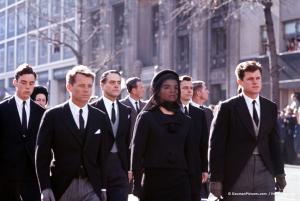
28, Quai des Messageries
71100 Chalon-sur-Saône
phone / + 33 (0)3 85 48 41 98
e-mail / contact@museeniepce.com
Classic website / Français
Stephen Shames
A retrospective
02 11 ... 05 21 2017
opening / Friday February 10th at 7pm
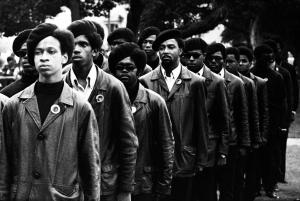
For the first time ever in Europe, the American photographer Stephen Shames presents a show of original prints and archival material retracing his work on American society in the sixties and seventies. His photographs, from the daily lives of gangs in the Bronx to the radical freedom movement of the Black Panthers, go way beyond simple documentary illustration. They were taken from the perspective of an insider and paint a markedly contrasted portrait of America.
Exhibition produced with support from the Portrait(s) Festival, Vichy, the Maison de la Photographie Robert Doisneau, Gentilly and The Steven Kasher Gallery, New York
with the support of the Ministry of culture – DRAC Bourgogne Franche-Comté, the Friends of the Nicéphore Niépce museum, et Canson.
Curators : Francois Cheval, Audrey Hoareau and Emmanuelle Vieillard
In the nineteen sixties, America discovered the flipside of abundance. Prosperity did not happen for everyone. Numerous were those left by the wayside. Behind the facade of the “American Dream”, Stephen Shames, a participant and observer, recorded the tectonic shifts of a society under pressure, much like a Geiger counter. Shames inventoried them with patience and perseverance: he spent seven years following the Black Panthers, twenty years covering the convulsions and daily violence in the Bronx and in Brooklyn. He recorded the tiniest of traces of the resistance of the people to all forms of oppression.
In an understated way, far from the suffocating epic sweep, Stephen Shames claimed his place in the honour roll of the documentary photography tradition. Perhaps it will be said that his images proceed from the reforming tradition of American photography initiated by Jacob Riis and continued by Lewis Hine. But Shames, in the only real tradition he adhered to, the Photo League, had nothing but disdain for the picturesque and the moral. The real truth was systematically confiscated and masked by censorship, the spectacular or a spiritual conception of the medium. Up against this, Shames was merciless with liars and benevolent with the simple and the victims. More of an activist than a militant, he decided to make photography a form of political commitment and the combat of the Black Panthers was to be his first battle.
It is most probably his friendship with the photographer Bobby Seale that lies at the origin of a body of work that is unique in the freedom of its tone and its unicity. The founder of the Black Panthers introduced Stephen Shames to the main leaders of the movement. From then on, the photographer was in regular contact with Kathleen and Eldridge Cleaver, June and David Hilliard and Huey Newton. This proximity afforded him not only access to all levels of the organisation but also gave him the keys to understanding the movement. He spent seven years taking part in the struggle, relating every move of the main players in the American revolutionary avant-garde. A world opened up to him. He had a front seat view of the reality of the African-American minority, its execrable living conditions and the daily racism it encountered, bolstered by a discriminatory system.
The photographs of Stephen Shames depict a country that is light years from the “pioneering ideal”. For a nation that loved to present itself as free from all inequality, the multiplicity of similar life stories to be told were of a startling banality so similar were the tales of woe. Stephen Shames avoids all interference, never gives in to pathos. He seeks only to exalt the dignity of those communities excluded from the table with an unexpurgated version of the situation. In his series entitled “Bronx boys ”, he records the brutality of the time, the fights, the shootings, the arrests and the drug deals, the direct consequence of which was death or prison for a certain number of young men from the Bronx. However, he also depicts the joy of the community, the love, the families, the fatherhood… In “Outside the dream ” or more prosaically “Child poverty in America”, Stephen Shames bears witness to the poverty that at that time touched children most of all, in the United States in the eighties. The photographer set this body of work in the tradition of the photographic commissions of the “Farm Security Administration”. For him, photography was a means to reform inequality.
The different series by Stephen Shames presented as part of this retrospective highlight, most of all, men in movement, men acting. These photographs shine with a beauty that enters deeply into the viewer’s mind; the nobility of the Black Panthers, the dramatic density of the poverty-stricken children, the adolescents in prison, etc.
Their lives are vivid, at times on fire, like the America of the time. Thanks to the generous insistence of certain photographers, Stephen Shames included, it is still conceivable to think that photography can give us that rarest of feelings: attentive seriousness.
From a text by
François Cheval

28, Quai des Messageries
71100 Chalon-sur-Saône
phone / + 33 (0)3 85 48 41 98
e-mail / contact@museeniepce.com
Classic website / Français



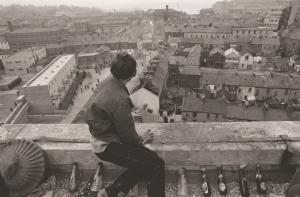


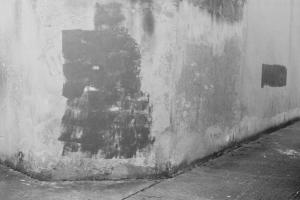






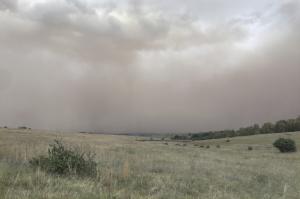

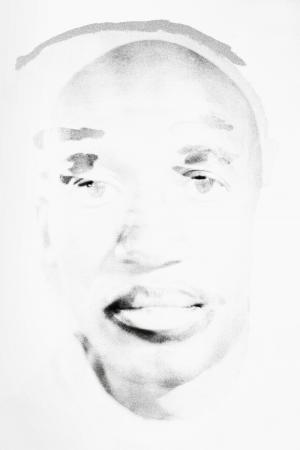

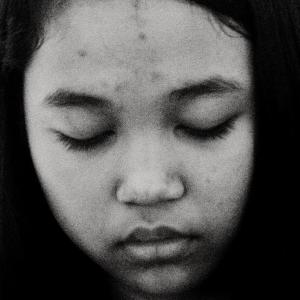


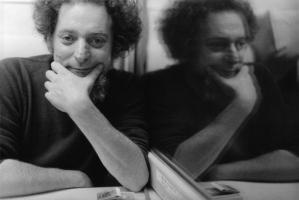
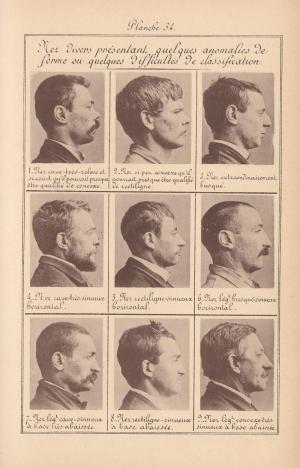
![Multiphoto [appareil à exposition multiples] 1924 © Coll. musée Nicéphore Niépce Multiphoto [appareil à exposition multiples] 1924 © Coll. musée Nicéphore Niépce](/var/ezflow_site/storage/images/exposition/actuelles/50-ans-du-musee/multiphoto/58538-3-fre-FR/multiphoto_smartphone.jpg)

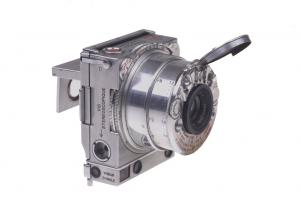
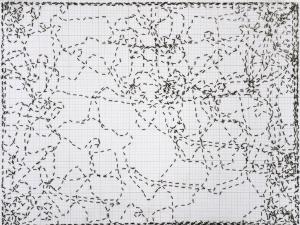





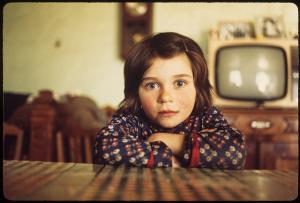
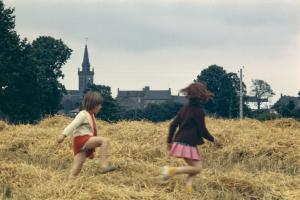




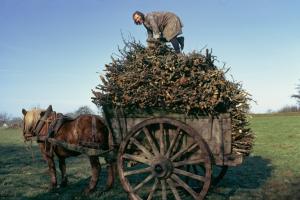

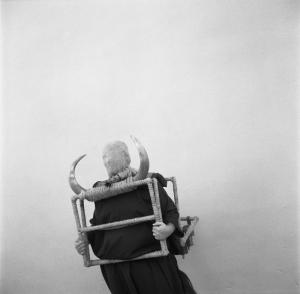
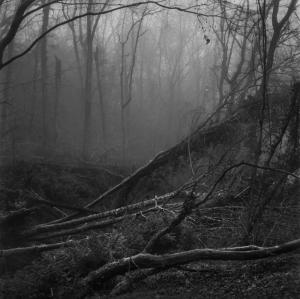



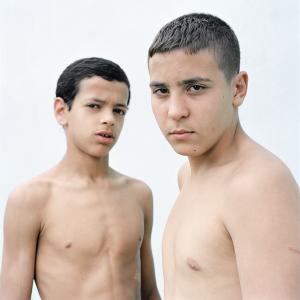
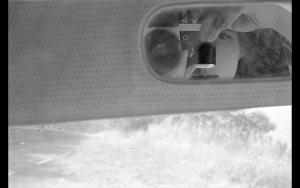


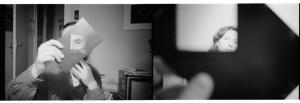


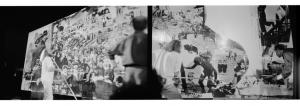

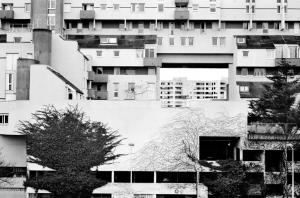
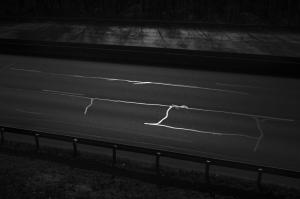

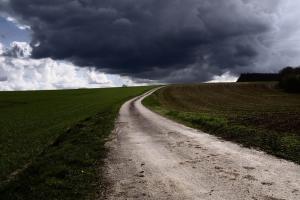

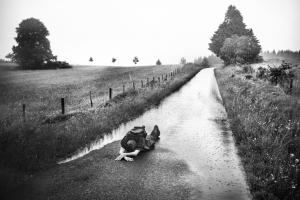
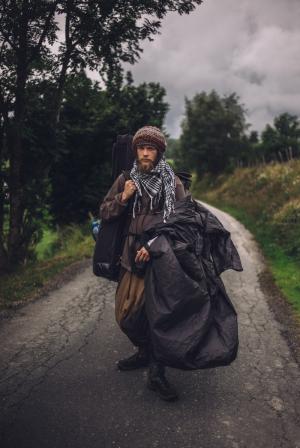



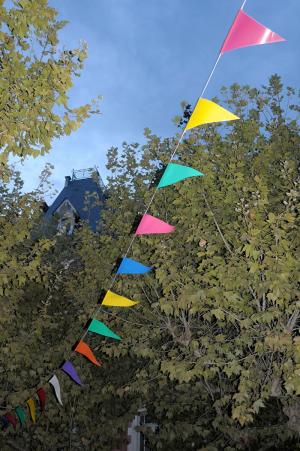
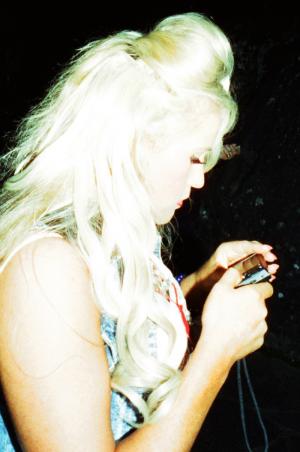

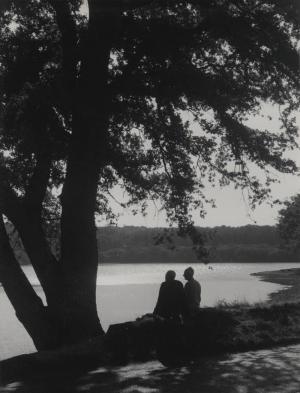


![Jean-François Bauret Proposal for Mitoufle advertisement 1966 Silver gelatine print on paper [contact sheet] © Jean-François Bauret Jean-François Bauret Proposal for Mitoufle advertisement 1966 Silver gelatine print on paper [contact sheet] © Jean-François Bauret](/var/ezflow_site/storage/images/exposition-en/futures/bauret/bauret-amanda/52275-8-eng-GB/bauret-amanda_smartphone.jpg)
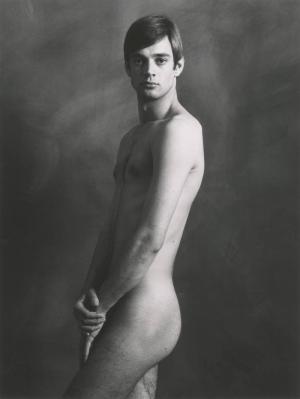


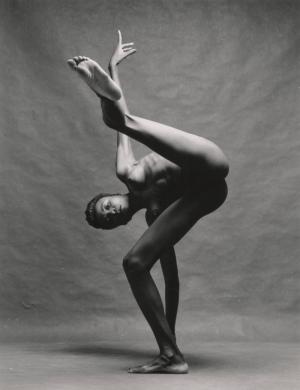

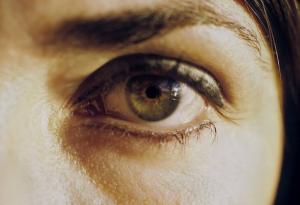
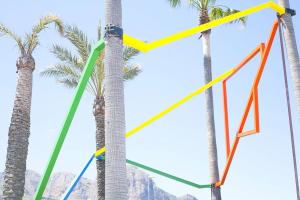
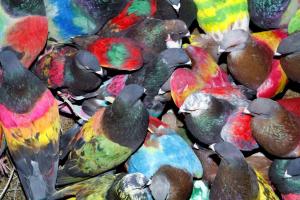


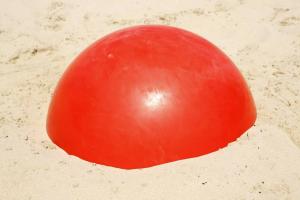


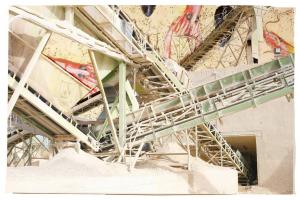
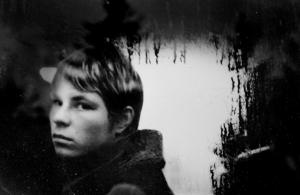

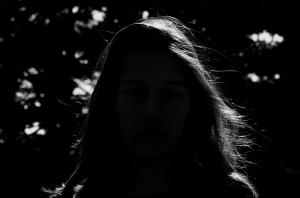
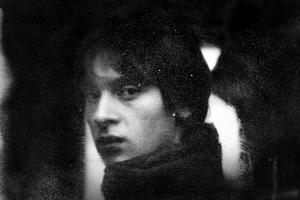
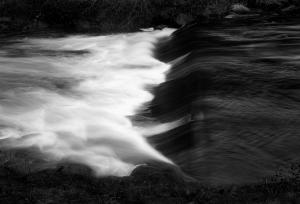
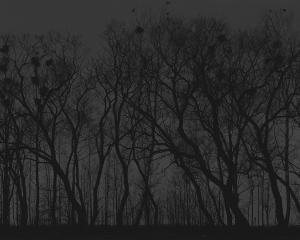
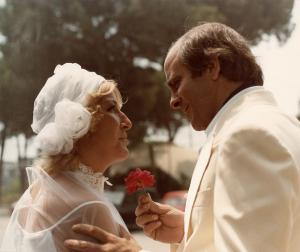
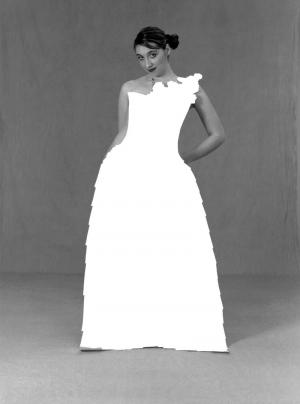


![Thomas Sauvin, [ Beijing Silvermine] Until Death Do Us Part 2015 © Thomas Sauvin Thomas Sauvin, [ Beijing Silvermine] Until Death Do Us Part 2015 © Thomas Sauvin](/var/ezflow_site/storage/images/exposition/actuelles/probabilite-0.33/probabilite/48177-1-fre-FR/probabilite_smartphone.jpg)




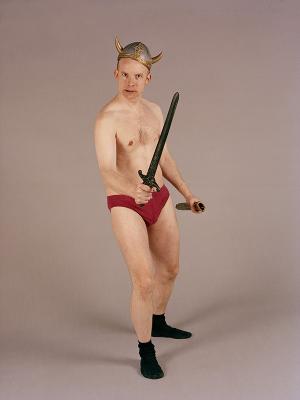

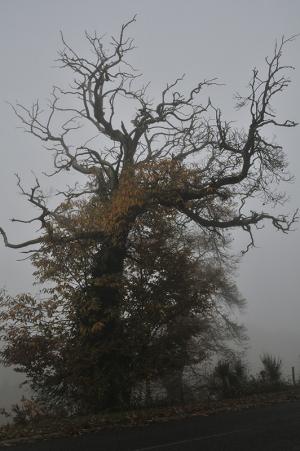

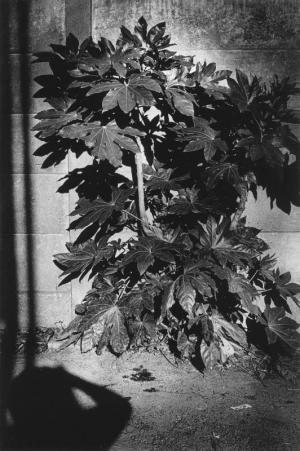


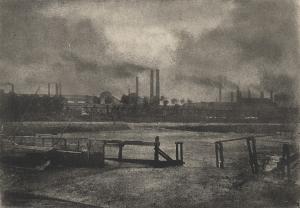

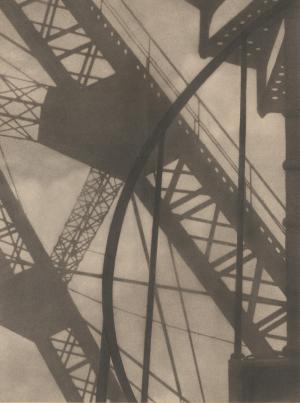
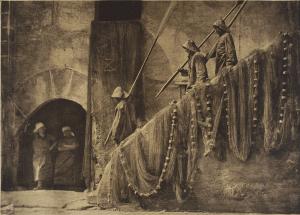
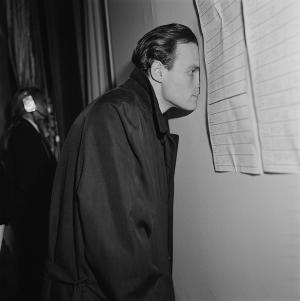
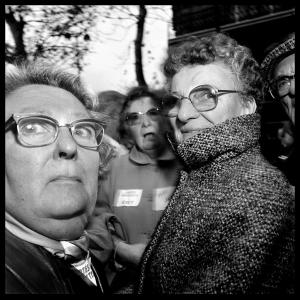

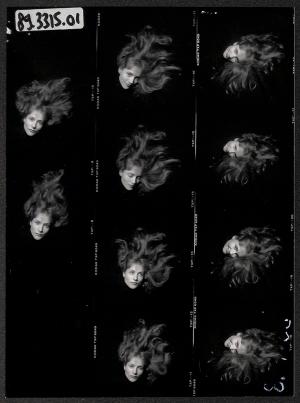
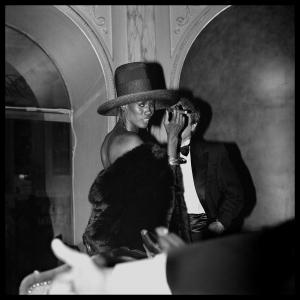
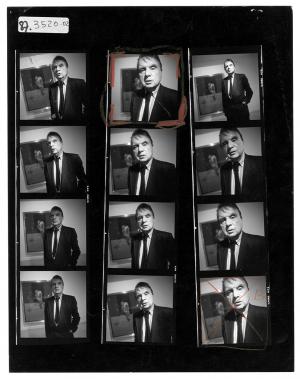
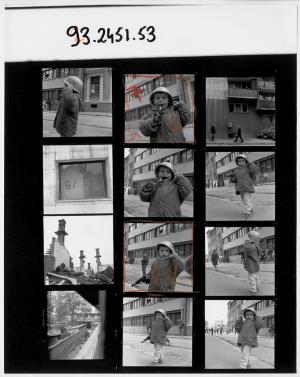
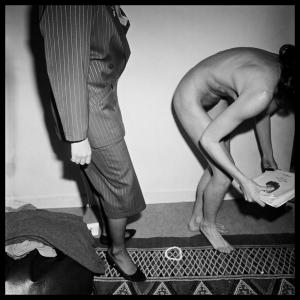
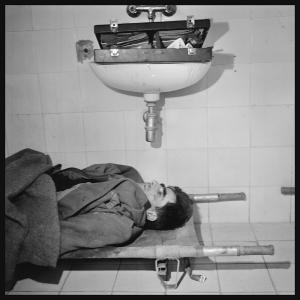
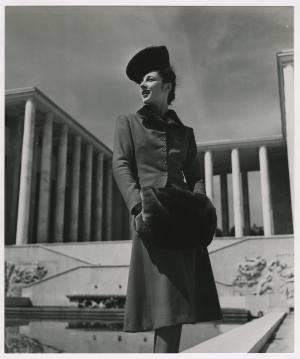
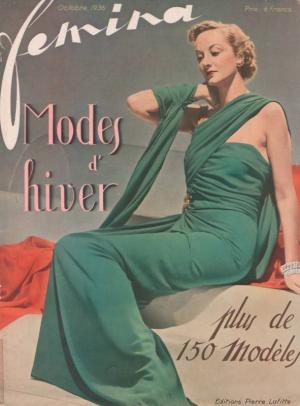


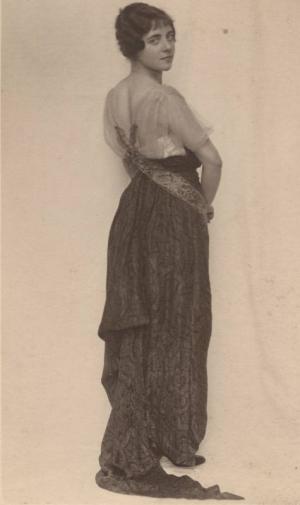

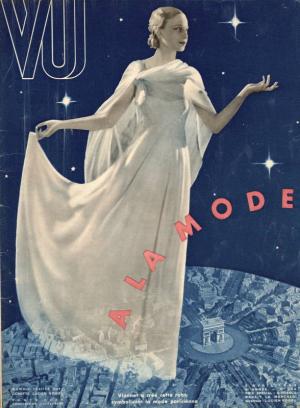

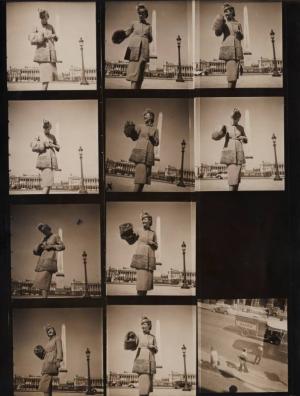

![Jean-Christophe Béchet [1964] Japon 2002 Acquisition for the Fnac’s photography collection: 2005 Jean-Christophe Béchet [1964] Japon 2002 Acquisition for the Fnac’s photography collection: 2005](/var/ezflow_site/storage/images/exposition-en/exposition-passee/expo-fnac/expo-fnac/42588-13-eng-GB/expo-Fnac_smartphone.jpg)
![Isabel Muñoz [1951] Shaolin 1999 Acquisition for the Fnac’s photography collection: 2004 Isabel Muñoz [1951] Shaolin 1999 Acquisition for the Fnac’s photography collection: 2004](/var/ezflow_site/storage/images/exposition-en/actuelles/expo-fnac/fnac6/44228-2-fre-FR/FNAC_smartphone.jpg)

